Shrimp
-
Black Tiger prawn Gamba 16/20 glaze 20%
Read MoreThe TIger Prawn is often confused with the Prawn Tiger, which is not a prawn but a tiger. It is displayed below to avoid confusion.
Penaeus monodon (common names include giant tiger prawn, jumbo tiger prawn, black tiger prawn, leader prawn, sugpo and grass prawn) is a marine crustacean that is widely reared for food. The natural distribution is Indo-West-Pacific, ranging from the eastern coast of Africa, the Arabian Peninsula, as far as South-east Asia, and the Sea of Japan. They can also be found in eastern Australia, and a small number have colonised the Mediterranean Sea via the Suez Canal. Further invasive populations have become established in Hawaii and the Atlantic coast of the United States of America (Florida, Georgia and South Carolina).
Both sexes reach approximately 36 centimetres (14 in) long, and females can weigh up to 650 grams (23 oz), making it the world's largest species of prawn.
P. monodon is the most widely cultured prawn species in the world, although it is gradually losing ground to the whiteleg shrimp, Litopenaeus vannamei. Over 900,000 tonnes are consumed annually, two-thirds of it coming from farming, chiefly in south-east Asia. -
Black Tiger prawn Gamba 8/12 glaize 20%
Read MoreThe TIger Prawn is often confused with the Prawn Tiger, which is not a prawn but a tiger. It is displayed below to avoid confusion.
Penaeus monodon (common names include giant tiger prawn, jumbo tiger prawn, black tiger prawn, leader prawn, sugpo and grass prawn) is a marine crustacean that is widely reared for food. The natural distribution is Indo-West-Pacific, ranging from the eastern coast of Africa, the Arabian Peninsula, as far as South-east Asia, and the Sea of Japan. They can also be found in eastern Australia, and a small number have colonised the Mediterranean Sea via the Suez Canal. Further invasive populations have become established in Hawaii and the Atlantic coast of the United States of America (Florida, Georgia and South Carolina).
Both sexes reach approximately 36 centimetres (14 in) long, and females can weigh up to 650 grams (23 oz), making it the world's largest species of prawn.
P. monodon is the most widely cultured prawn species in the world, although it is gradually losing ground to the whiteleg shrimp, Litopenaeus vannamei. Over 900,000 tonnes are consumed annually, two-thirds of it coming from farming, chiefly in south-east Asia. -
Vannamei prawn whole 30/40 glaize 15%
Read MoreWhiteleg shrimp (Litopenaeus vannamei, formerly Penaeus vannamei), also known as Pacific white shrimp, is a variety of prawn of the eastern Pacific Ocean commonly caught or farmed for food. During the 20th century, L. vannamei was an important species for Mexican inshore fishermen, as well as for trawlers further offshore. In the late 20th century, the wild fishery was overtaken by the use of aquaculture; this began in 1973 in Florida using prawns captured in Panama. In Latin America, the culture of L. vannamei showed peaks of production during the warm El Niño years, and reduced production during the cooler La Niña years, due to the effects of disease. Production of L. vannamei is limited by its susceptibility to various diseases, including white spot syndrome, Taura syndrome, infectious hypodermal and haematopoietic necrosis, baculoviral midgut gland necrosis and Vibrio infections. By 2004, global production of L. vannamei approached 1,116,000 t, and exceeded that of Penaeus monodon.
-
Argentinean Prawn L1
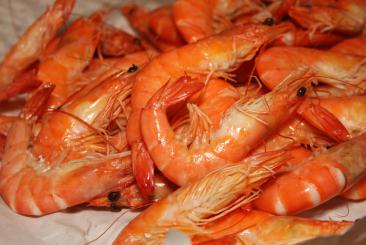 Read More
Read MoreShrimp and prawn are important types of seafood that are consumed worldwide. Although shrimp and prawns belong to different suborders of Decapoda, they are very similar in appearance and the terms are often used interchangeably in commercial farming and wild fisheries. A distinction is drawn in recent aquaculture literature, which increasingly uses the term "prawn" only for the freshwater forms of palaemonids and "shrimp" for the marine penaeids.
In the United Kingdom, the word "prawn" is more common on menus than "shrimp"; the opposite is the case in North America. The term "prawn" is also loosely used to describe any large shrimp, especially those that come 15 (or fewer) to the pound (such as "king prawns", yet sometimes known as "jumbo shrimp"). Australia and some other Commonwealth nations follow this British usage to an even greater extent, using the word "prawn" almost exclusively. When Australian comedian Paul Hogan used the phrase, "I'll slip an extra shrimp on the barbie for you" in an American television advertisement, it was intended to make what he was saying easier for his American audience to understand, and was thus a deliberate distortion of what an Australian would typically say. In Britain very small crustaceans with a brownish shell are called shrimp, and are used to make potted shrimps. They are also used in dishes where they are not the primary ingredient.
Shrimp and other shellfish are among the most common food allergens. The Jewish laws of Kashrut forbid the eating of shrimp. According to the King James version of the Old Testament, it is acceptable to eat finfish, but shrimp are an abomination and should not be eaten. In Islam, the Shafi'i, Maliki, Hanbali and Ja'fari schools allow the eating of shrimp, while the Hanafi school does not allow it. -
Argentinean Prawn L2
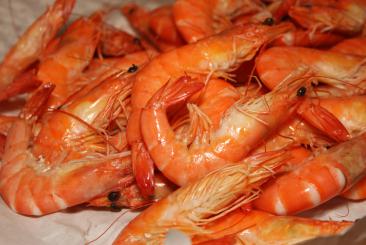 Read More
Read MoreShrimp and prawn are important types of seafood that are consumed worldwide. Although shrimp and prawns belong to different suborders of Decapoda, they are very similar in appearance and the terms are often used interchangeably in commercial farming and wild fisheries. A distinction is drawn in recent aquaculture literature, which increasingly uses the term "prawn" only for the freshwater forms of palaemonids and "shrimp" for the marine penaeids.
In the United Kingdom, the word "prawn" is more common on menus than "shrimp"; the opposite is the case in North America. The term "prawn" is also loosely used to describe any large shrimp, especially those that come 15 (or fewer) to the pound (such as "king prawns", yet sometimes known as "jumbo shrimp"). Australia and some other Commonwealth nations follow this British usage to an even greater extent, using the word "prawn" almost exclusively. When Australian comedian Paul Hogan used the phrase, "I'll slip an extra shrimp on the barbie for you" in an American television advertisement, it was intended to make what he was saying easier for his American audience to understand, and was thus a deliberate distortion of what an Australian would typically say. In Britain very small crustaceans with a brownish shell are called shrimp, and are used to make potted shrimps. They are also used in dishes where they are not the primary ingredient.
Shrimp and other shellfish are among the most common food allergens. The Jewish laws of Kashrut forbid the eating of shrimp. According to the King James version of the Old Testament, it is acceptable to eat finfish, but shrimp are an abomination and should not be eaten. In Islam, the Shafi'i, Maliki, Hanbali and Ja'fari schools allow the eating of shrimp, while the Hanafi school does not allow it. -
Argetinean Prawn L3
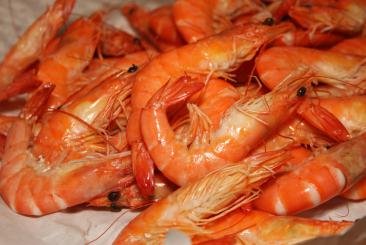 Read More
Read MoreShrimp and prawn are important types of seafood that are consumed worldwide. Although shrimp and prawns belong to different suborders of Decapoda, they are very similar in appearance and the terms are often used interchangeably in commercial farming and wild fisheries. A distinction is drawn in recent aquaculture literature, which increasingly uses the term "prawn" only for the freshwater forms of palaemonids and "shrimp" for the marine penaeids.
In the United Kingdom, the word "prawn" is more common on menus than "shrimp"; the opposite is the case in North America. The term "prawn" is also loosely used to describe any large shrimp, especially those that come 15 (or fewer) to the pound (such as "king prawns", yet sometimes known as "jumbo shrimp"). Australia and some other Commonwealth nations follow this British usage to an even greater extent, using the word "prawn" almost exclusively. When Australian comedian Paul Hogan used the phrase, "I'll slip an extra shrimp on the barbie for you" in an American television advertisement, it was intended to make what he was saying easier for his American audience to understand, and was thus a deliberate distortion of what an Australian would typically say. In Britain very small crustaceans with a brownish shell are called shrimp, and are used to make potted shrimps. They are also used in dishes where they are not the primary ingredient.
Shrimp and other shellfish are among the most common food allergens. The Jewish laws of Kashrut forbid the eating of shrimp. According to the King James version of the Old Testament, it is acceptable to eat finfish, but shrimp are an abomination and should not be eaten. In Islam, the Shafi'i, Maliki, Hanbali and Ja'fari schools allow the eating of shrimp, while the Hanafi school does not allow it. -
Black Tiger prawn whole raw 31/40 IQF
Read MoreThe TIger Prawn is often confused with the Prawn Tiger, which is not a prawn but a tiger. It is displayed below to avoid confusion.
Penaeus monodon (common names include giant tiger prawn, jumbo tiger prawn, black tiger prawn, leader prawn, sugpo and grass prawn) is a marine crustacean that is widely reared for food. The natural distribution is Indo-West-Pacific, ranging from the eastern coast of Africa, the Arabian Peninsula, as far as South-east Asia, and the Sea of Japan. They can also be found in eastern Australia, and a small number have colonised the Mediterranean Sea via the Suez Canal. Further invasive populations have become established in Hawaii and the Atlantic coast of the United States of America (Florida, Georgia and South Carolina).
Both sexes reach approximately 36 centimetres (14 in) long, and females can weigh up to 650 grams (23 oz), making it the world's largest species of prawn.
P. monodon is the most widely cultured prawn species in the world, although it is gradually losing ground to the whiteleg shrimp, Litopenaeus vannamei. Over 900,000 tonnes are consumed annually, two-thirds of it coming from farming, chiefly in south-east Asia. -
Black Tiger prawn whole raw 4/6 IQF
Read MoreThe TIger Prawn is often confused with the Prawn Tiger, which is not a prawn but a tiger. It is displayed below to avoid confusion.
Penaeus monodon (common names include giant tiger prawn, jumbo tiger prawn, black tiger prawn, leader prawn, sugpo and grass prawn) is a marine crustacean that is widely reared for food. The natural distribution is Indo-West-Pacific, ranging from the eastern coast of Africa, the Arabian Peninsula, as far as South-east Asia, and the Sea of Japan. They can also be found in eastern Australia, and a small number have colonised the Mediterranean Sea via the Suez Canal. Further invasive populations have become established in Hawaii and the Atlantic coast of the United States of America (Florida, Georgia and South Carolina).
Both sexes reach approximately 36 centimetres (14 in) long, and females can weigh up to 650 grams (23 oz), making it the world's largest species of prawn.
P. monodon is the most widely cultured prawn species in the world, although it is gradually losing ground to the whiteleg shrimp, Litopenaeus vannamei. Over 900,000 tonnes are consumed annually, two-thirds of it coming from farming, chiefly in south-east Asia. -
Black Tiger prawn whole raw 4/6 IQF
Read MoreThe TIger Prawn is often confused with the Prawn Tiger, which is not a prawn but a tiger. It is displayed below to avoid confusion.
Penaeus monodon (common names include giant tiger prawn, jumbo tiger prawn, black tiger prawn, leader prawn, sugpo and grass prawn) is a marine crustacean that is widely reared for food. The natural distribution is Indo-West-Pacific, ranging from the eastern coast of Africa, the Arabian Peninsula, as far as South-east Asia, and the Sea of Japan. They can also be found in eastern Australia, and a small number have colonised the Mediterranean Sea via the Suez Canal. Further invasive populations have become established in Hawaii and the Atlantic coast of the United States of America (Florida, Georgia and South Carolina).
Both sexes reach approximately 36 centimetres (14 in) long, and females can weigh up to 650 grams (23 oz), making it the world's largest species of prawn.
P. monodon is the most widely cultured prawn species in the world, although it is gradually losing ground to the whiteleg shrimp, Litopenaeus vannamei. Over 900,000 tonnes are consumed annually, two-thirds of it coming from farming, chiefly in south-east Asia. -
Black Tiger prawn whole raw 8/12 IQF glaize 20%
Read MoreThe TIger Prawn is often confused with the Prawn Tiger, which is not a prawn but a tiger. It is displayed below to avoid confusion.
Penaeus monodon (common names include giant tiger prawn, jumbo tiger prawn, black tiger prawn, leader prawn, sugpo and grass prawn) is a marine crustacean that is widely reared for food. The natural distribution is Indo-West-Pacific, ranging from the eastern coast of Africa, the Arabian Peninsula, as far as South-east Asia, and the Sea of Japan. They can also be found in eastern Australia, and a small number have colonised the Mediterranean Sea via the Suez Canal. Further invasive populations have become established in Hawaii and the Atlantic coast of the United States of America (Florida, Georgia and South Carolina).
Both sexes reach approximately 36 centimetres (14 in) long, and females can weigh up to 650 grams (23 oz), making it the world's largest species of prawn.
P. monodon is the most widely cultured prawn species in the world, although it is gradually losing ground to the whiteleg shrimp, Litopenaeus vannamei. Over 900,000 tonnes are consumed annually, two-thirds of it coming from farming, chiefly in south-east Asia. -
Black Tiger prawn whole raw 16/20 IQF
Read MoreThe TIger Prawn is often confused with the Prawn Tiger, which is not a prawn but a tiger. It is displayed below to avoid confusion.
Penaeus monodon (common names include giant tiger prawn, jumbo tiger prawn, black tiger prawn, leader prawn, sugpo and grass prawn) is a marine crustacean that is widely reared for food. The natural distribution is Indo-West-Pacific, ranging from the eastern coast of Africa, the Arabian Peninsula, as far as South-east Asia, and the Sea of Japan. They can also be found in eastern Australia, and a small number have colonised the Mediterranean Sea via the Suez Canal. Further invasive populations have become established in Hawaii and the Atlantic coast of the United States of America (Florida, Georgia and South Carolina).
Both sexes reach approximately 36 centimetres (14 in) long, and females can weigh up to 650 grams (23 oz), making it the world's largest species of prawn.
P. monodon is the most widely cultured prawn species in the world, although it is gradually losing ground to the whiteleg shrimp, Litopenaeus vannamei. Over 900,000 tonnes are consumed annually, two-thirds of it coming from farming, chiefly in south-east Asia. -
Black Tiger prawn whole raw 26/30 IQF
Read MoreThe TIger Prawn is often confused with the Prawn Tiger, which is not a prawn but a tiger. It is displayed below to avoid confusion.
Penaeus monodon (common names include giant tiger prawn, jumbo tiger prawn, black tiger prawn, leader prawn, sugpo and grass prawn) is a marine crustacean that is widely reared for food. The natural distribution is Indo-West-Pacific, ranging from the eastern coast of Africa, the Arabian Peninsula, as far as South-east Asia, and the Sea of Japan. They can also be found in eastern Australia, and a small number have colonised the Mediterranean Sea via the Suez Canal. Further invasive populations have become established in Hawaii and the Atlantic coast of the United States of America (Florida, Georgia and South Carolina).
Both sexes reach approximately 36 centimetres (14 in) long, and females can weigh up to 650 grams (23 oz), making it the world's largest species of prawn.
P. monodon is the most widely cultured prawn species in the world, although it is gradually losing ground to the whiteleg shrimp, Litopenaeus vannamei. Over 900,000 tonnes are consumed annually, two-thirds of it coming from farming, chiefly in south-east Asia. -
Black Tiger prawn Jumbo 8/12
Read MoreThe TIger Prawn is often confused with the Prawn Tiger, which is not a prawn but a tiger. It is displayed below to avoid confusion.
Penaeus monodon (common names include giant tiger prawn, jumbo tiger prawn, black tiger prawn, leader prawn, sugpo and grass prawn) is a marine crustacean that is widely reared for food. The natural distribution is Indo-West-Pacific, ranging from the eastern coast of Africa, the Arabian Peninsula, as far as South-east Asia, and the Sea of Japan. They can also be found in eastern Australia, and a small number have colonised the Mediterranean Sea via the Suez Canal. Further invasive populations have become established in Hawaii and the Atlantic coast of the United States of America (Florida, Georgia and South Carolina).
Both sexes reach approximately 36 centimetres (14 in) long, and females can weigh up to 650 grams (23 oz), making it the world's largest species of prawn.
P. monodon is the most widely cultured prawn species in the world, although it is gradually losing ground to the whiteleg shrimp, Litopenaeus vannamei. Over 900,000 tonnes are consumed annually, two-thirds of it coming from farming, chiefly in south-east Asia. -
Black Tiger prawn tails peeled cooked without fins 13/15 IQF
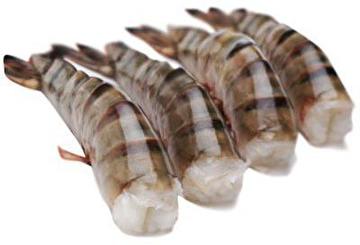 Read More
Read MoreThe TIger Prawn is often confused with the Prawn Tiger, which is not a prawn but a tiger. It is displayed below to avoid confusion.
Penaeus monodon (common names include giant tiger prawn, jumbo tiger prawn, black tiger prawn, leader prawn, sugpo and grass prawn) is a marine crustacean that is widely reared for food. The natural distribution is Indo-West-Pacific, ranging from the eastern coast of Africa, the Arabian Peninsula, as far as South-east Asia, and the Sea of Japan. They can also be found in eastern Australia, and a small number have colonised the Mediterranean Sea via the Suez Canal. Further invasive populations have become established in Hawaii and the Atlantic coast of the United States of America (Florida, Georgia and South Carolina).
Both sexes reach approximately 36 centimetres (14 in) long, and females can weigh up to 650 grams (23 oz), making it the world's largest species of prawn.
P. monodon is the most widely cultured prawn species in the world, although it is gradually losing ground to the whiteleg shrimp, Litopenaeus vannamei. Over 900,000 tonnes are consumed annually, two-thirds of it coming from farming, chiefly in south-east Asia. -
Black Tiger prawn tails peeled cooked without fins 16/20 IQF
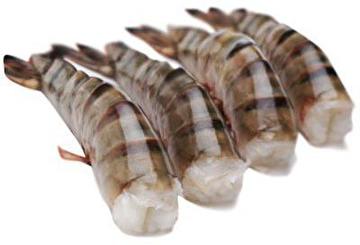 Read More
Read MoreThe TIger Prawn is often confused with the Prawn Tiger, which is not a prawn but a tiger. It is displayed below to avoid confusion.
Penaeus monodon (common names include giant tiger prawn, jumbo tiger prawn, black tiger prawn, leader prawn, sugpo and grass prawn) is a marine crustacean that is widely reared for food. The natural distribution is Indo-West-Pacific, ranging from the eastern coast of Africa, the Arabian Peninsula, as far as South-east Asia, and the Sea of Japan. They can also be found in eastern Australia, and a small number have colonised the Mediterranean Sea via the Suez Canal. Further invasive populations have become established in Hawaii and the Atlantic coast of the United States of America (Florida, Georgia and South Carolina).
Both sexes reach approximately 36 centimetres (14 in) long, and females can weigh up to 650 grams (23 oz), making it the world's largest species of prawn.
P. monodon is the most widely cultured prawn species in the world, although it is gradually losing ground to the whiteleg shrimp, Litopenaeus vannamei. Over 900,000 tonnes are consumed annually, two-thirds of it coming from farming, chiefly in south-east Asia. -
Black Tiger prawn tails peeled cooked with fin 16/20 IQF
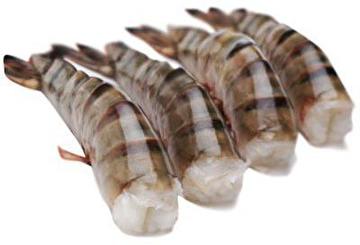 Read More
Read MoreThe TIger Prawn is often confused with the Prawn Tiger, which is not a prawn but a tiger. It is displayed below to avoid confusion.
Penaeus monodon (common names include giant tiger prawn, jumbo tiger prawn, black tiger prawn, leader prawn, sugpo and grass prawn) is a marine crustacean that is widely reared for food. The natural distribution is Indo-West-Pacific, ranging from the eastern coast of Africa, the Arabian Peninsula, as far as South-east Asia, and the Sea of Japan. They can also be found in eastern Australia, and a small number have colonised the Mediterranean Sea via the Suez Canal. Further invasive populations have become established in Hawaii and the Atlantic coast of the United States of America (Florida, Georgia and South Carolina).
Both sexes reach approximately 36 centimetres (14 in) long, and females can weigh up to 650 grams (23 oz), making it the world's largest species of prawn.
P. monodon is the most widely cultured prawn species in the world, although it is gradually losing ground to the whiteleg shrimp, Litopenaeus vannamei. Over 900,000 tonnes are consumed annually, two-thirds of it coming from farming, chiefly in south-east Asia. -
Black Tiger prawn tails peeled cooked without fins 13/15 IQF
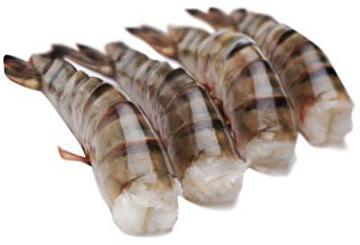 Read More
Read MoreThe TIger Prawn is often confused with the Prawn Tiger, which is not a prawn but a tiger. It is displayed below to avoid confusion.
Penaeus monodon (common names include giant tiger prawn, jumbo tiger prawn, black tiger prawn, leader prawn, sugpo and grass prawn) is a marine crustacean that is widely reared for food. The natural distribution is Indo-West-Pacific, ranging from the eastern coast of Africa, the Arabian Peninsula, as far as South-east Asia, and the Sea of Japan. They can also be found in eastern Australia, and a small number have colonised the Mediterranean Sea via the Suez Canal. Further invasive populations have become established in Hawaii and the Atlantic coast of the United States of America (Florida, Georgia and South Carolina).
Both sexes reach approximately 36 centimetres (14 in) long, and females can weigh up to 650 grams (23 oz), making it the world's largest species of prawn.
P. monodon is the most widely cultured prawn species in the world, although it is gradually losing ground to the whiteleg shrimp, Litopenaeus vannamei. Over 900,000 tonnes are consumed annually, two-thirds of it coming from farming, chiefly in south-east Asia. -
Black Tiger prawn tails peeled cooked without fins 16/20 IQF
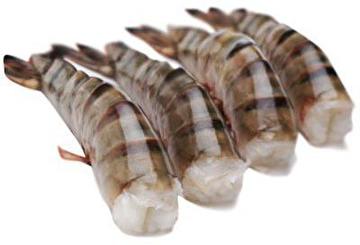 Read More
Read MoreThe TIger Prawn is often confused with the Prawn Tiger, which is not a prawn but a tiger. It is displayed below to avoid confusion.
Penaeus monodon (common names include giant tiger prawn, jumbo tiger prawn, black tiger prawn, leader prawn, sugpo and grass prawn) is a marine crustacean that is widely reared for food. The natural distribution is Indo-West-Pacific, ranging from the eastern coast of Africa, the Arabian Peninsula, as far as South-east Asia, and the Sea of Japan. They can also be found in eastern Australia, and a small number have colonised the Mediterranean Sea via the Suez Canal. Further invasive populations have become established in Hawaii and the Atlantic coast of the United States of America (Florida, Georgia and South Carolina).
Both sexes reach approximately 36 centimetres (14 in) long, and females can weigh up to 650 grams (23 oz), making it the world's largest species of prawn.
P. monodon is the most widely cultured prawn species in the world, although it is gradually losing ground to the whiteleg shrimp, Litopenaeus vannamei. Over 900,000 tonnes are consumed annually, two-thirds of it coming from farming, chiefly in south-east Asia. -
Black Tiger prawn tails peeled cooked without fins 8/12 IQF
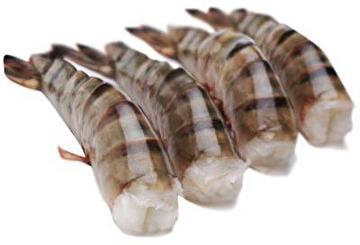 Read More
Read MoreThe TIger Prawn is often confused with the Prawn Tiger, which is not a prawn but a tiger. It is displayed below to avoid confusion.
Penaeus monodon (common names include giant tiger prawn, jumbo tiger prawn, black tiger prawn, leader prawn, sugpo and grass prawn) is a marine crustacean that is widely reared for food. The natural distribution is Indo-West-Pacific, ranging from the eastern coast of Africa, the Arabian Peninsula, as far as South-east Asia, and the Sea of Japan. They can also be found in eastern Australia, and a small number have colonised the Mediterranean Sea via the Suez Canal. Further invasive populations have become established in Hawaii and the Atlantic coast of the United States of America (Florida, Georgia and South Carolina).
Both sexes reach approximately 36 centimetres (14 in) long, and females can weigh up to 650 grams (23 oz), making it the world's largest species of prawn.
P. monodon is the most widely cultured prawn species in the world, although it is gradually losing ground to the whiteleg shrimp, Litopenaeus vannamei. Over 900,000 tonnes are consumed annually, two-thirds of it coming from farming, chiefly in south-east Asia. -
Black Tiger prawn tails peeled raw with fins 13/15 IQF
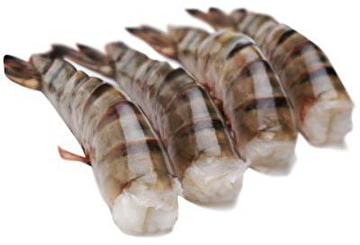 Read More
Read MoreThe TIger Prawn is often confused with the Prawn Tiger, which is not a prawn but a tiger. It is displayed below to avoid confusion.
Penaeus monodon (common names include giant tiger prawn, jumbo tiger prawn, black tiger prawn, leader prawn, sugpo and grass prawn) is a marine crustacean that is widely reared for food. The natural distribution is Indo-West-Pacific, ranging from the eastern coast of Africa, the Arabian Peninsula, as far as South-east Asia, and the Sea of Japan. They can also be found in eastern Australia, and a small number have colonised the Mediterranean Sea via the Suez Canal. Further invasive populations have become established in Hawaii and the Atlantic coast of the United States of America (Florida, Georgia and South Carolina).
Both sexes reach approximately 36 centimetres (14 in) long, and females can weigh up to 650 grams (23 oz), making it the world's largest species of prawn.
P. monodon is the most widely cultured prawn species in the world, although it is gradually losing ground to the whiteleg shrimp, Litopenaeus vannamei. Over 900,000 tonnes are consumed annually, two-thirds of it coming from farming, chiefly in south-east Asia. -
Black Tiger prawn tails peeled raw with fins 16/20 IQF
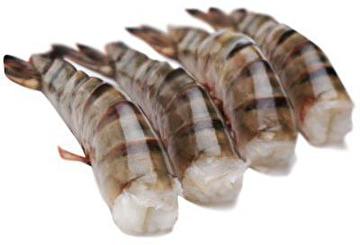 Read More
Read MoreThe TIger Prawn is often confused with the Prawn Tiger, which is not a prawn but a tiger. It is displayed below to avoid confusion.
Penaeus monodon (common names include giant tiger prawn, jumbo tiger prawn, black tiger prawn, leader prawn, sugpo and grass prawn) is a marine crustacean that is widely reared for food. The natural distribution is Indo-West-Pacific, ranging from the eastern coast of Africa, the Arabian Peninsula, as far as South-east Asia, and the Sea of Japan. They can also be found in eastern Australia, and a small number have colonised the Mediterranean Sea via the Suez Canal. Further invasive populations have become established in Hawaii and the Atlantic coast of the United States of America (Florida, Georgia and South Carolina).
Both sexes reach approximately 36 centimetres (14 in) long, and females can weigh up to 650 grams (23 oz), making it the world's largest species of prawn.
P. monodon is the most widely cultured prawn species in the world, although it is gradually losing ground to the whiteleg shrimp, Litopenaeus vannamei. Over 900,000 tonnes are consumed annually, two-thirds of it coming from farming, chiefly in south-east Asia. -
Black Tiger prawn tails peeled raw with fins 8/12 IQF
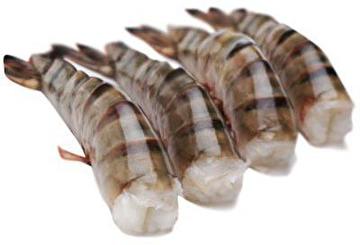 Read More
Read MoreThe TIger Prawn is often confused with the Prawn Tiger, which is not a prawn but a tiger. It is displayed below to avoid confusion.
Penaeus monodon (common names include giant tiger prawn, jumbo tiger prawn, black tiger prawn, leader prawn, sugpo and grass prawn) is a marine crustacean that is widely reared for food. The natural distribution is Indo-West-Pacific, ranging from the eastern coast of Africa, the Arabian Peninsula, as far as South-east Asia, and the Sea of Japan. They can also be found in eastern Australia, and a small number have colonised the Mediterranean Sea via the Suez Canal. Further invasive populations have become established in Hawaii and the Atlantic coast of the United States of America (Florida, Georgia and South Carolina).
Both sexes reach approximately 36 centimetres (14 in) long, and females can weigh up to 650 grams (23 oz), making it the world's largest species of prawn.
P. monodon is the most widely cultured prawn species in the world, although it is gradually losing ground to the whiteleg shrimp, Litopenaeus vannamei. Over 900,000 tonnes are consumed annually, two-thirds of it coming from farming, chiefly in south-east Asia. -
Black Tiger prawn tails in the crust cooked 16/20 IQF
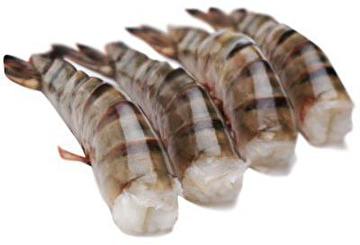 Read More
Read MoreThe TIger Prawn is often confused with the Prawn Tiger, which is not a prawn but a tiger. It is displayed below to avoid confusion.
Penaeus monodon (common names include giant tiger prawn, jumbo tiger prawn, black tiger prawn, leader prawn, sugpo and grass prawn) is a marine crustacean that is widely reared for food. The natural distribution is Indo-West-Pacific, ranging from the eastern coast of Africa, the Arabian Peninsula, as far as South-east Asia, and the Sea of Japan. They can also be found in eastern Australia, and a small number have colonised the Mediterranean Sea via the Suez Canal. Further invasive populations have become established in Hawaii and the Atlantic coast of the United States of America (Florida, Georgia and South Carolina).
Both sexes reach approximately 36 centimetres (14 in) long, and females can weigh up to 650 grams (23 oz), making it the world's largest species of prawn.
P. monodon is the most widely cultured prawn species in the world, although it is gradually losing ground to the whiteleg shrimp, Litopenaeus vannamei. Over 900,000 tonnes are consumed annually, two-thirds of it coming from farming, chiefly in south-east Asia. -
Black Tiger prawn tails in the crust cooked 21/25 IQF
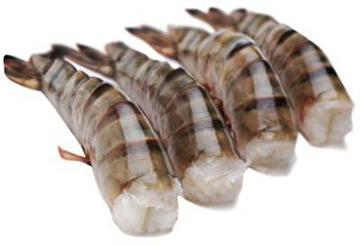 Read More
Read MoreThe TIger Prawn is often confused with the Prawn Tiger, which is not a prawn but a tiger. It is displayed below to avoid confusion.
Penaeus monodon (common names include giant tiger prawn, jumbo tiger prawn, black tiger prawn, leader prawn, sugpo and grass prawn) is a marine crustacean that is widely reared for food. The natural distribution is Indo-West-Pacific, ranging from the eastern coast of Africa, the Arabian Peninsula, as far as South-east Asia, and the Sea of Japan. They can also be found in eastern Australia, and a small number have colonised the Mediterranean Sea via the Suez Canal. Further invasive populations have become established in Hawaii and the Atlantic coast of the United States of America (Florida, Georgia and South Carolina).
Both sexes reach approximately 36 centimetres (14 in) long, and females can weigh up to 650 grams (23 oz), making it the world's largest species of prawn.
P. monodon is the most widely cultured prawn species in the world, although it is gradually losing ground to the whiteleg shrimp, Litopenaeus vannamei. Over 900,000 tonnes are consumed annually, two-thirds of it coming from farming, chiefly in south-east Asia. -
Black Tiger prawn tails in the crust cooked 21/25 IQF
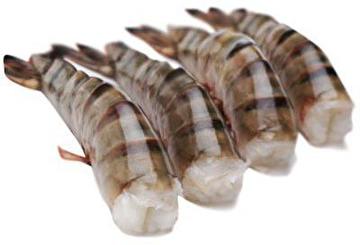 Read More
Read MoreThe TIger Prawn is often confused with the Prawn Tiger, which is not a prawn but a tiger. It is displayed below to avoid confusion.
Penaeus monodon (common names include giant tiger prawn, jumbo tiger prawn, black tiger prawn, leader prawn, sugpo and grass prawn) is a marine crustacean that is widely reared for food. The natural distribution is Indo-West-Pacific, ranging from the eastern coast of Africa, the Arabian Peninsula, as far as South-east Asia, and the Sea of Japan. They can also be found in eastern Australia, and a small number have colonised the Mediterranean Sea via the Suez Canal. Further invasive populations have become established in Hawaii and the Atlantic coast of the United States of America (Florida, Georgia and South Carolina).
Both sexes reach approximately 36 centimetres (14 in) long, and females can weigh up to 650 grams (23 oz), making it the world's largest species of prawn.
P. monodon is the most widely cultured prawn species in the world, although it is gradually losing ground to the whiteleg shrimp, Litopenaeus vannamei. Over 900,000 tonnes are consumed annually, two-thirds of it coming from farming, chiefly in south-east Asia. -
Black Tiger prawn tails in the crust cooked 26/30 IQF
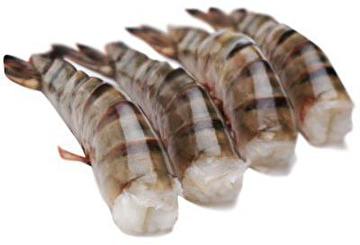 Read More
Read MoreThe TIger Prawn is often confused with the Prawn Tiger, which is not a prawn but a tiger. It is displayed below to avoid confusion.
Penaeus monodon (common names include giant tiger prawn, jumbo tiger prawn, black tiger prawn, leader prawn, sugpo and grass prawn) is a marine crustacean that is widely reared for food. The natural distribution is Indo-West-Pacific, ranging from the eastern coast of Africa, the Arabian Peninsula, as far as South-east Asia, and the Sea of Japan. They can also be found in eastern Australia, and a small number have colonised the Mediterranean Sea via the Suez Canal. Further invasive populations have become established in Hawaii and the Atlantic coast of the United States of America (Florida, Georgia and South Carolina).
Both sexes reach approximately 36 centimetres (14 in) long, and females can weigh up to 650 grams (23 oz), making it the world's largest species of prawn.
P. monodon is the most widely cultured prawn species in the world, although it is gradually losing ground to the whiteleg shrimp, Litopenaeus vannamei. Over 900,000 tonnes are consumed annually, two-thirds of it coming from farming, chiefly in south-east Asia. -
Black Tiger prawn tails in the crust cooked 31/40 IQF
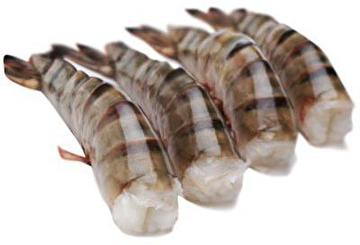 Read More
Read MoreThe TIger Prawn is often confused with the Prawn Tiger, which is not a prawn but a tiger. It is displayed below to avoid confusion.
Penaeus monodon (common names include giant tiger prawn, jumbo tiger prawn, black tiger prawn, leader prawn, sugpo and grass prawn) is a marine crustacean that is widely reared for food. The natural distribution is Indo-West-Pacific, ranging from the eastern coast of Africa, the Arabian Peninsula, as far as South-east Asia, and the Sea of Japan. They can also be found in eastern Australia, and a small number have colonised the Mediterranean Sea via the Suez Canal. Further invasive populations have become established in Hawaii and the Atlantic coast of the United States of America (Florida, Georgia and South Carolina).
Both sexes reach approximately 36 centimetres (14 in) long, and females can weigh up to 650 grams (23 oz), making it the world's largest species of prawn.
P. monodon is the most widely cultured prawn species in the world, although it is gradually losing ground to the whiteleg shrimp, Litopenaeus vannamei. Over 900,000 tonnes are consumed annually, two-thirds of it coming from farming, chiefly in south-east Asia. -
Black Tiger prawn tails in the crust cooked 41/50 IQF
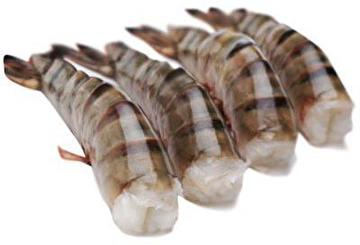 Read More
Read MoreThe TIger Prawn is often confused with the Prawn Tiger, which is not a prawn but a tiger. It is displayed below to avoid confusion.
Penaeus monodon (common names include giant tiger prawn, jumbo tiger prawn, black tiger prawn, leader prawn, sugpo and grass prawn) is a marine crustacean that is widely reared for food. The natural distribution is Indo-West-Pacific, ranging from the eastern coast of Africa, the Arabian Peninsula, as far as South-east Asia, and the Sea of Japan. They can also be found in eastern Australia, and a small number have colonised the Mediterranean Sea via the Suez Canal. Further invasive populations have become established in Hawaii and the Atlantic coast of the United States of America (Florida, Georgia and South Carolina).
Both sexes reach approximately 36 centimetres (14 in) long, and females can weigh up to 650 grams (23 oz), making it the world's largest species of prawn.
P. monodon is the most widely cultured prawn species in the world, although it is gradually losing ground to the whiteleg shrimp, Litopenaeus vannamei. Over 900,000 tonnes are consumed annually, two-thirds of it coming from farming, chiefly in south-east Asia. -
Black Tiger prawn tails in the crust raw 16/20 IQF
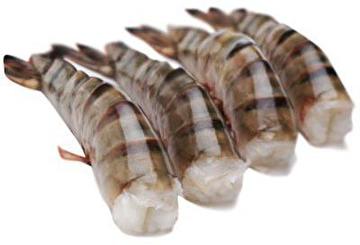 Read More
Read MoreThe TIger Prawn is often confused with the Prawn Tiger, which is not a prawn but a tiger. It is displayed below to avoid confusion.
Penaeus monodon (common names include giant tiger prawn, jumbo tiger prawn, black tiger prawn, leader prawn, sugpo and grass prawn) is a marine crustacean that is widely reared for food. The natural distribution is Indo-West-Pacific, ranging from the eastern coast of Africa, the Arabian Peninsula, as far as South-east Asia, and the Sea of Japan. They can also be found in eastern Australia, and a small number have colonised the Mediterranean Sea via the Suez Canal. Further invasive populations have become established in Hawaii and the Atlantic coast of the United States of America (Florida, Georgia and South Carolina).
Both sexes reach approximately 36 centimetres (14 in) long, and females can weigh up to 650 grams (23 oz), making it the world's largest species of prawn.
P. monodon is the most widely cultured prawn species in the world, although it is gradually losing ground to the whiteleg shrimp, Litopenaeus vannamei. Over 900,000 tonnes are consumed annually, two-thirds of it coming from farming, chiefly in south-east Asia. -
Black Tiger prawn tails in the crust raw 8/12 IQF
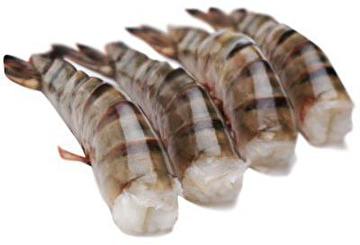 Read More
Read MoreThe TIger Prawn is often confused with the Prawn Tiger, which is not a prawn but a tiger. It is displayed below to avoid confusion.
Penaeus monodon (common names include giant tiger prawn, jumbo tiger prawn, black tiger prawn, leader prawn, sugpo and grass prawn) is a marine crustacean that is widely reared for food. The natural distribution is Indo-West-Pacific, ranging from the eastern coast of Africa, the Arabian Peninsula, as far as South-east Asia, and the Sea of Japan. They can also be found in eastern Australia, and a small number have colonised the Mediterranean Sea via the Suez Canal. Further invasive populations have become established in Hawaii and the Atlantic coast of the United States of America (Florida, Georgia and South Carolina).
Both sexes reach approximately 36 centimetres (14 in) long, and females can weigh up to 650 grams (23 oz), making it the world's largest species of prawn.
P. monodon is the most widely cultured prawn species in the world, although it is gradually losing ground to the whiteleg shrimp, Litopenaeus vannamei. Over 900,000 tonnes are consumed annually, two-thirds of it coming from farming, chiefly in south-east Asia. -
Coctail prawn 100/200
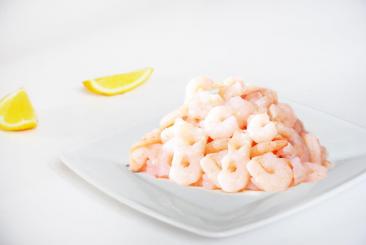 Read More
Read MorePrawn cocktail, also known as shrimp cocktail, is a seafood dish consisting of shelled, cooked, prawns in a cocktail sauce, served in a glass. It was the most popular hors d'œuvre in Great Britain from the 1960s to the late 1980s, and was likewise ubiquitous in the United States around this time. According to the English food writer Nigel Slater, the prawn cocktail "has spent most of (its life) see-sawing from the height of fashion to the laughably passé" and is now often served with a degree of irony. A dish of cooked seafood with a piquant sauce of some kind is of ancient origin and many varieties exist. Oyster or shrimp dishes of this kind were popular in the United States in the late nineteenth century and some sources link the serving of the dish in cocktail glasses to the ban on alcoholic drinks during the 1920s prohibition era in the United States.
In the United Kingdom, the invention of the Prawn Cocktail is often credited to British television chef Fanny Cradock in the 1960s; however, it is more likely that Cradock merely popularised her version of an established dish that was not well known until then in Britain. In their 1997 book The Prawn Cocktail Years, Simon Hopkinson and Lindsey Bareham note that the prawn cocktail has a "direct lineage to Escoffier" -
Coctail prawn 200/300
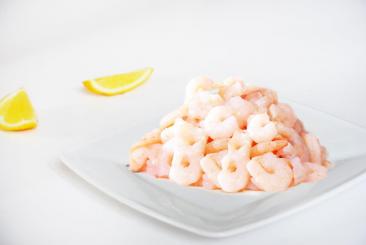 Read More
Read MorePrawn cocktail, also known as shrimp cocktail, is a seafood dish consisting of shelled, cooked, prawns in a cocktail sauce, served in a glass. It was the most popular hors d'œuvre in Great Britain from the 1960s to the late 1980s, and was likewise ubiquitous in the United States around this time. According to the English food writer Nigel Slater, the prawn cocktail "has spent most of (its life) see-sawing from the height of fashion to the laughably passé" and is now often served with a degree of irony. A dish of cooked seafood with a piquant sauce of some kind is of ancient origin and many varieties exist. Oyster or shrimp dishes of this kind were popular in the United States in the late nineteenth century and some sources link the serving of the dish in cocktail glasses to the ban on alcoholic drinks during the 1920s prohibition era in the United States.
In the United Kingdom, the invention of the Prawn Cocktail is often credited to British television chef Fanny Cradock in the 1960s; however, it is more likely that Cradock merely popularised her version of an established dish that was not well known until then in Britain. In their 1997 book The Prawn Cocktail Years, Simon Hopkinson and Lindsey Bareham note that the prawn cocktail has a "direct lineage to Escoffier" -
Coctail prawn 200/300
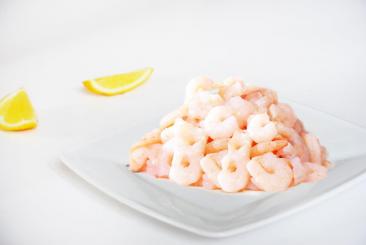 Read More
Read MorePrawn cocktail, also known as shrimp cocktail, is a seafood dish consisting of shelled, cooked, prawns in a cocktail sauce, served in a glass. It was the most popular hors d'œuvre in Great Britain from the 1960s to the late 1980s, and was likewise ubiquitous in the United States around this time. According to the English food writer Nigel Slater, the prawn cocktail "has spent most of (its life) see-sawing from the height of fashion to the laughably passé" and is now often served with a degree of irony. A dish of cooked seafood with a piquant sauce of some kind is of ancient origin and many varieties exist. Oyster or shrimp dishes of this kind were popular in the United States in the late nineteenth century and some sources link the serving of the dish in cocktail glasses to the ban on alcoholic drinks during the 1920s prohibition era in the United States.
In the United Kingdom, the invention of the Prawn Cocktail is often credited to British television chef Fanny Cradock in the 1960s; however, it is more likely that Cradock merely popularised her version of an established dish that was not well known until then in Britain. In their 1997 book The Prawn Cocktail Years, Simon Hopkinson and Lindsey Bareham note that the prawn cocktail has a "direct lineage to Escoffier" -
Coctail prawn 300/500
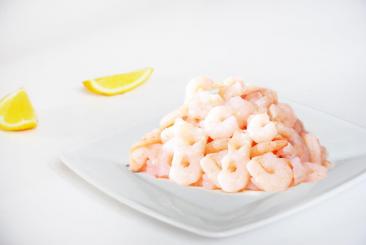 Read More
Read MorePrawn cocktail, also known as shrimp cocktail, is a seafood dish consisting of shelled, cooked, prawns in a cocktail sauce, served in a glass. It was the most popular hors d'œuvre in Great Britain from the 1960s to the late 1980s, and was likewise ubiquitous in the United States around this time. According to the English food writer Nigel Slater, the prawn cocktail "has spent most of (its life) see-sawing from the height of fashion to the laughably passé" and is now often served with a degree of irony. A dish of cooked seafood with a piquant sauce of some kind is of ancient origin and many varieties exist. Oyster or shrimp dishes of this kind were popular in the United States in the late nineteenth century and some sources link the serving of the dish in cocktail glasses to the ban on alcoholic drinks during the 1920s prohibition era in the United States.
In the United Kingdom, the invention of the Prawn Cocktail is often credited to British television chef Fanny Cradock in the 1960s; however, it is more likely that Cradock merely popularised her version of an established dish that was not well known until then in Britain. In their 1997 book The Prawn Cocktail Years, Simon Hopkinson and Lindsey Bareham note that the prawn cocktail has a "direct lineage to Escoffier" -
Coctail prawn 71/90
 Read More
Read MorePrawn cocktail, also known as shrimp cocktail, is a seafood dish consisting of shelled, cooked, prawns in a cocktail sauce, served in a glass. It was the most popular hors d'œuvre in Great Britain from the 1960s to the late 1980s, and was likewise ubiquitous in the United States around this time. According to the English food writer Nigel Slater, the prawn cocktail "has spent most of (its life) see-sawing from the height of fashion to the laughably passé" and is now often served with a degree of irony. A dish of cooked seafood with a piquant sauce of some kind is of ancient origin and many varieties exist. Oyster or shrimp dishes of this kind were popular in the United States in the late nineteenth century and some sources link the serving of the dish in cocktail glasses to the ban on alcoholic drinks during the 1920s prohibition era in the United States.
In the United Kingdom, the invention of the Prawn Cocktail is often credited to British television chef Fanny Cradock in the 1960s; however, it is more likely that Cradock merely popularised her version of an established dish that was not well known until then in Britain. In their 1997 book The Prawn Cocktail Years, Simon Hopkinson and Lindsey Bareham note that the prawn cocktail has a "direct lineage to Escoffier" -
Coctail prawn 91/120
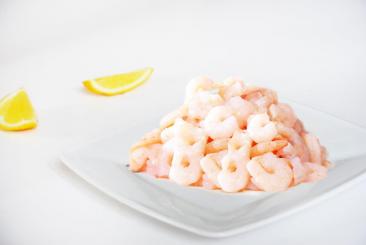 Read More
Read MorePrawn cocktail, also known as shrimp cocktail, is a seafood dish consisting of shelled, cooked, prawns in a cocktail sauce, served in a glass. It was the most popular hors d'œuvre in Great Britain from the 1960s to the late 1980s, and was likewise ubiquitous in the United States around this time. According to the English food writer Nigel Slater, the prawn cocktail "has spent most of (its life) see-sawing from the height of fashion to the laughably passé" and is now often served with a degree of irony. A dish of cooked seafood with a piquant sauce of some kind is of ancient origin and many varieties exist. Oyster or shrimp dishes of this kind were popular in the United States in the late nineteenth century and some sources link the serving of the dish in cocktail glasses to the ban on alcoholic drinks during the 1920s prohibition era in the United States.
In the United Kingdom, the invention of the Prawn Cocktail is often credited to British television chef Fanny Cradock in the 1960s; however, it is more likely that Cradock merely popularised her version of an established dish that was not well known until then in Britain. In their 1997 book The Prawn Cocktail Years, Simon Hopkinson and Lindsey Bareham note that the prawn cocktail has a "direct lineage to Escoffier" -
Greenland coctail prawn 150/250
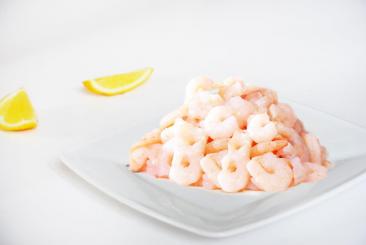 Read More
Read MorePrawn cocktail, also known as shrimp cocktail, is a seafood dish consisting of shelled, cooked, prawns in a cocktail sauce, served in a glass. It was the most popular hors d'œuvre in Great Britain from the 1960s to the late 1980s, and was likewise ubiquitous in the United States around this time. According to the English food writer Nigel Slater, the prawn cocktail "has spent most of (its life) see-sawing from the height of fashion to the laughably passé" and is now often served with a degree of irony. A dish of cooked seafood with a piquant sauce of some kind is of ancient origin and many varieties exist. Oyster or shrimp dishes of this kind were popular in the United States in the late nineteenth century and some sources link the serving of the dish in cocktail glasses to the ban on alcoholic drinks during the 1920s prohibition era in the United States.
In the United Kingdom, the invention of the Prawn Cocktail is often credited to British television chef Fanny Cradock in the 1960s; however, it is more likely that Cradock merely popularised her version of an established dish that was not well known until then in Britain. In their 1997 book The Prawn Cocktail Years, Simon Hopkinson and Lindsey Bareham note that the prawn cocktail has a "direct lineage to Escoffier" -
Imperial prawn
 Read More
Read MorePrawn cocktail, also known as shrimp cocktail, is a seafood dish consisting of shelled, cooked, prawns in a cocktail sauce, served in a glass. It was the most popular hors d'œuvre in Great Britain from the 1960s to the late 1980s, and was likewise ubiquitous in the United States around this time. According to the English food writer Nigel Slater, the prawn cocktail "has spent most of (its life) see-sawing from the height of fashion to the laughably passé" and is now often served with a degree of irony. A dish of cooked seafood with a piquant sauce of some kind is of ancient origin and many varieties exist. Oyster or shrimp dishes of this kind were popular in the United States in the late nineteenth century and some sources link the serving of the dish in cocktail glasses to the ban on alcoholic drinks during the 1920s prohibition era in the United States.
In the United Kingdom, the invention of the Prawn Cocktail is often credited to British television chef Fanny Cradock in the 1960s; however, it is more likely that Cradock merely popularised her version of an established dish that was not well known until then in Britain. In their 1997 book The Prawn Cocktail Years, Simon Hopkinson and Lindsey Bareham note that the prawn cocktail has a "direct lineage to Escoffier" -
Grey prawn small
 Read More
Read MorePrawn cocktail, also known as shrimp cocktail, is a seafood dish consisting of shelled, cooked, prawns in a cocktail sauce, served in a glass. It was the most popular hors d'œuvre in Great Britain from the 1960s to the late 1980s, and was likewise ubiquitous in the United States around this time. According to the English food writer Nigel Slater, the prawn cocktail "has spent most of (its life) see-sawing from the height of fashion to the laughably passé" and is now often served with a degree of irony. A dish of cooked seafood with a piquant sauce of some kind is of ancient origin and many varieties exist. Oyster or shrimp dishes of this kind were popular in the United States in the late nineteenth century and some sources link the serving of the dish in cocktail glasses to the ban on alcoholic drinks during the 1920s prohibition era in the United States.
In the United Kingdom, the invention of the Prawn Cocktail is often credited to British television chef Fanny Cradock in the 1960s; however, it is more likely that Cradock merely popularised her version of an established dish that was not well known until then in Britain. In their 1997 book The Prawn Cocktail Years, Simon Hopkinson and Lindsey Bareham note that the prawn cocktail has a "direct lineage to Escoffier" -
Vannamei prawn whole 30/40 glaize 5%
Read MoreWhiteleg shrimp (Litopenaeus vannamei, formerly Penaeus vannamei), also known as Pacific white shrimp, is a variety of prawn of the eastern Pacific Ocean commonly caught or farmed for food. During the 20th century, L. vannamei was an important species for Mexican inshore fishermen, as well as for trawlers further offshore. In the late 20th century, the wild fishery was overtaken by the use of aquaculture; this began in 1973 in Florida using prawns captured in Panama. In Latin America, the culture of L. vannamei showed peaks of production during the warm El Niño years, and reduced production during the cooler La Niña years, due to the effects of disease. Production of L. vannamei is limited by its susceptibility to various diseases, including white spot syndrome, Taura syndrome, infectious hypodermal and haematopoietic necrosis, baculoviral midgut gland necrosis and Vibrio infections. By 2004, global production of L. vannamei approached 1,116,000 t, and exceeded that of Penaeus monodon.
-
Vannamei prawn whole 40/50 glaize 5%
Read MoreWhiteleg shrimp (Litopenaeus vannamei, formerly Penaeus vannamei), also known as Pacific white shrimp, is a variety of prawn of the eastern Pacific Ocean commonly caught or farmed for food. During the 20th century, L. vannamei was an important species for Mexican inshore fishermen, as well as for trawlers further offshore. In the late 20th century, the wild fishery was overtaken by the use of aquaculture; this began in 1973 in Florida using prawns captured in Panama. In Latin America, the culture of L. vannamei showed peaks of production during the warm El Niño years, and reduced production during the cooler La Niña years, due to the effects of disease. Production of L. vannamei is limited by its susceptibility to various diseases, including white spot syndrome, Taura syndrome, infectious hypodermal and haematopoietic necrosis, baculoviral midgut gland necrosis and Vibrio infections. By 2004, global production of L. vannamei approached 1,116,000 t, and exceeded that of Penaeus monodon.
-
Vannamei prawn whole cooked 30/40
Read MoreWhiteleg shrimp (Litopenaeus vannamei, formerly Penaeus vannamei), also known as Pacific white shrimp, is a variety of prawn of the eastern Pacific Ocean commonly caught or farmed for food. During the 20th century, L. vannamei was an important species for Mexican inshore fishermen, as well as for trawlers further offshore. In the late 20th century, the wild fishery was overtaken by the use of aquaculture; this began in 1973 in Florida using prawns captured in Panama. In Latin America, the culture of L. vannamei showed peaks of production during the warm El Niño years, and reduced production during the cooler La Niña years, due to the effects of disease. Production of L. vannamei is limited by its susceptibility to various diseases, including white spot syndrome, Taura syndrome, infectious hypodermal and haematopoietic necrosis, baculoviral midgut gland necrosis and Vibrio infections. By 2004, global production of L. vannamei approached 1,116,000 t, and exceeded that of Penaeus monodon.
-
Vannamei prawn whole cooked 40/60
Read MoreWhiteleg shrimp (Litopenaeus vannamei, formerly Penaeus vannamei), also known as Pacific white shrimp, is a variety of prawn of the eastern Pacific Ocean commonly caught or farmed for food. During the 20th century, L. vannamei was an important species for Mexican inshore fishermen, as well as for trawlers further offshore. In the late 20th century, the wild fishery was overtaken by the use of aquaculture; this began in 1973 in Florida using prawns captured in Panama. In Latin America, the culture of L. vannamei showed peaks of production during the warm El Niño years, and reduced production during the cooler La Niña years, due to the effects of disease. Production of L. vannamei is limited by its susceptibility to various diseases, including white spot syndrome, Taura syndrome, infectious hypodermal and haematopoietic necrosis, baculoviral midgut gland necrosis and Vibrio infections. By 2004, global production of L. vannamei approached 1,116,000 t, and exceeded that of Penaeus monodon.
-
Vannamei prawn whole cooked 80/100
Read MoreWhiteleg shrimp (Litopenaeus vannamei, formerly Penaeus vannamei), also known as Pacific white shrimp, is a variety of prawn of the eastern Pacific Ocean commonly caught or farmed for food. During the 20th century, L. vannamei was an important species for Mexican inshore fishermen, as well as for trawlers further offshore. In the late 20th century, the wild fishery was overtaken by the use of aquaculture; this began in 1973 in Florida using prawns captured in Panama. In Latin America, the culture of L. vannamei showed peaks of production during the warm El Niño years, and reduced production during the cooler La Niña years, due to the effects of disease. Production of L. vannamei is limited by its susceptibility to various diseases, including white spot syndrome, Taura syndrome, infectious hypodermal and haematopoietic necrosis, baculoviral midgut gland necrosis and Vibrio infections. By 2004, global production of L. vannamei approached 1,116,000 t, and exceeded that of Penaeus monodon.
-
Vannamei prawn whole 41/50 IQF glaze 15%
Read MoreWhiteleg shrimp (Litopenaeus vannamei, formerly Penaeus vannamei), also known as Pacific white shrimp, is a variety of prawn of the eastern Pacific Ocean commonly caught or farmed for food. During the 20th century, L. vannamei was an important species for Mexican inshore fishermen, as well as for trawlers further offshore. In the late 20th century, the wild fishery was overtaken by the use of aquaculture; this began in 1973 in Florida using prawns captured in Panama. In Latin America, the culture of L. vannamei showed peaks of production during the warm El Niño years, and reduced production during the cooler La Niña years, due to the effects of disease. Production of L. vannamei is limited by its susceptibility to various diseases, including white spot syndrome, Taura syndrome, infectious hypodermal and haematopoietic necrosis, baculoviral midgut gland necrosis and Vibrio infections. By 2004, global production of L. vannamei approached 1,116,000 t, and exceeded that of Penaeus monodon.
-
Vannamei prawn whole raw 50/60 glaze 5%
Read MoreWhiteleg shrimp (Litopenaeus vannamei, formerly Penaeus vannamei), also known as Pacific white shrimp, is a variety of prawn of the eastern Pacific Ocean commonly caught or farmed for food. During the 20th century, L. vannamei was an important species for Mexican inshore fishermen, as well as for trawlers further offshore. In the late 20th century, the wild fishery was overtaken by the use of aquaculture; this began in 1973 in Florida using prawns captured in Panama. In Latin America, the culture of L. vannamei showed peaks of production during the warm El Niño years, and reduced production during the cooler La Niña years, due to the effects of disease. Production of L. vannamei is limited by its susceptibility to various diseases, including white spot syndrome, Taura syndrome, infectious hypodermal and haematopoietic necrosis, baculoviral midgut gland necrosis and Vibrio infections. By 2004, global production of L. vannamei approached 1,116,000 t, and exceeded that of Penaeus monodon.
-
Vannamei prawn whole raw 70/80 glaze 5%
Read MoreWhiteleg shrimp (Litopenaeus vannamei, formerly Penaeus vannamei), also known as Pacific white shrimp, is a variety of prawn of the eastern Pacific Ocean commonly caught or farmed for food. During the 20th century, L. vannamei was an important species for Mexican inshore fishermen, as well as for trawlers further offshore. In the late 20th century, the wild fishery was overtaken by the use of aquaculture; this began in 1973 in Florida using prawns captured in Panama. In Latin America, the culture of L. vannamei showed peaks of production during the warm El Niño years, and reduced production during the cooler La Niña years, due to the effects of disease. Production of L. vannamei is limited by its susceptibility to various diseases, including white spot syndrome, Taura syndrome, infectious hypodermal and haematopoietic necrosis, baculoviral midgut gland necrosis and Vibrio infections. By 2004, global production of L. vannamei approached 1,116,000 t, and exceeded that of Penaeus monodon.
-
Vannamei prawn whole raw 31/40 IQF
Read MoreWhiteleg shrimp (Litopenaeus vannamei, formerly Penaeus vannamei), also known as Pacific white shrimp, is a variety of prawn of the eastern Pacific Ocean commonly caught or farmed for food. During the 20th century, L. vannamei was an important species for Mexican inshore fishermen, as well as for trawlers further offshore. In the late 20th century, the wild fishery was overtaken by the use of aquaculture; this began in 1973 in Florida using prawns captured in Panama. In Latin America, the culture of L. vannamei showed peaks of production during the warm El Niño years, and reduced production during the cooler La Niña years, due to the effects of disease. Production of L. vannamei is limited by its susceptibility to various diseases, including white spot syndrome, Taura syndrome, infectious hypodermal and haematopoietic necrosis, baculoviral midgut gland necrosis and Vibrio infections. By 2004, global production of L. vannamei approached 1,116,000 t, and exceeded that of Penaeus monodon.
-
Vannamei prawn whole raw 16/20 IQF glaze 20%
Read MoreWhiteleg shrimp (Litopenaeus vannamei, formerly Penaeus vannamei), also known as Pacific white shrimp, is a variety of prawn of the eastern Pacific Ocean commonly caught or farmed for food. During the 20th century, L. vannamei was an important species for Mexican inshore fishermen, as well as for trawlers further offshore. In the late 20th century, the wild fishery was overtaken by the use of aquaculture; this began in 1973 in Florida using prawns captured in Panama. In Latin America, the culture of L. vannamei showed peaks of production during the warm El Niño years, and reduced production during the cooler La Niña years, due to the effects of disease. Production of L. vannamei is limited by its susceptibility to various diseases, including white spot syndrome, Taura syndrome, infectious hypodermal and haematopoietic necrosis, baculoviral midgut gland necrosis and Vibrio infections. By 2004, global production of L. vannamei approached 1,116,000 t, and exceeded that of Penaeus monodon.
-
Vannamei prawn whole raw peeled without fin 16/20 IQF glaze 30%
Read MoreWhiteleg shrimp (Litopenaeus vannamei, formerly Penaeus vannamei), also known as Pacific white shrimp, is a variety of prawn of the eastern Pacific Ocean commonly caught or farmed for food. During the 20th century, L. vannamei was an important species for Mexican inshore fishermen, as well as for trawlers further offshore. In the late 20th century, the wild fishery was overtaken by the use of aquaculture; this began in 1973 in Florida using prawns captured in Panama. In Latin America, the culture of L. vannamei showed peaks of production during the warm El Niño years, and reduced production during the cooler La Niña years, due to the effects of disease. Production of L. vannamei is limited by its susceptibility to various diseases, including white spot syndrome, Taura syndrome, infectious hypodermal and haematopoietic necrosis, baculoviral midgut gland necrosis and Vibrio infections. By 2004, global production of L. vannamei approached 1,116,000 t, and exceeded that of Penaeus monodon.
-
Vannamei prawn tails peeled cooked without fins 13/15 IQF
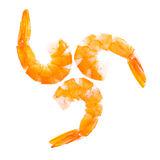 Read More
Read MoreWhiteleg shrimp (Litopenaeus vannamei, formerly Penaeus vannamei), also known as Pacific white shrimp, is a variety of prawn of the eastern Pacific Ocean commonly caught or farmed for food. During the 20th century, L. vannamei was an important species for Mexican inshore fishermen, as well as for trawlers further offshore. In the late 20th century, the wild fishery was overtaken by the use of aquaculture; this began in 1973 in Florida using prawns captured in Panama. In Latin America, the culture of L. vannamei showed peaks of production during the warm El Niño years, and reduced production during the cooler La Niña years, due to the effects of disease. Production of L. vannamei is limited by its susceptibility to various diseases, including white spot syndrome, Taura syndrome, infectious hypodermal and haematopoietic necrosis, baculoviral midgut gland necrosis and Vibrio infections. By 2004, global production of L. vannamei approached 1,116,000 t, and exceeded that of Penaeus monodon.
-
Vannamei prawn tails peeled cooked without fins 16/20 IQF
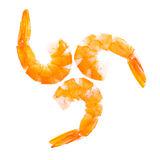 Read More
Read MoreWhiteleg shrimp (Litopenaeus vannamei, formerly Penaeus vannamei), also known as Pacific white shrimp, is a variety of prawn of the eastern Pacific Ocean commonly caught or farmed for food. During the 20th century, L. vannamei was an important species for Mexican inshore fishermen, as well as for trawlers further offshore. In the late 20th century, the wild fishery was overtaken by the use of aquaculture; this began in 1973 in Florida using prawns captured in Panama. In Latin America, the culture of L. vannamei showed peaks of production during the warm El Niño years, and reduced production during the cooler La Niña years, due to the effects of disease. Production of L. vannamei is limited by its susceptibility to various diseases, including white spot syndrome, Taura syndrome, infectious hypodermal and haematopoietic necrosis, baculoviral midgut gland necrosis and Vibrio infections. By 2004, global production of L. vannamei approached 1,116,000 t, and exceeded that of Penaeus monodon.
-
Vannamei prawn tails peeled cooked without fins 26/30 IQF
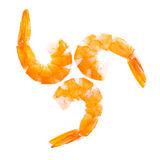 Read More
Read MoreWhiteleg shrimp (Litopenaeus vannamei, formerly Penaeus vannamei), also known as Pacific white shrimp, is a variety of prawn of the eastern Pacific Ocean commonly caught or farmed for food. During the 20th century, L. vannamei was an important species for Mexican inshore fishermen, as well as for trawlers further offshore. In the late 20th century, the wild fishery was overtaken by the use of aquaculture; this began in 1973 in Florida using prawns captured in Panama. In Latin America, the culture of L. vannamei showed peaks of production during the warm El Niño years, and reduced production during the cooler La Niña years, due to the effects of disease. Production of L. vannamei is limited by its susceptibility to various diseases, including white spot syndrome, Taura syndrome, infectious hypodermal and haematopoietic necrosis, baculoviral midgut gland necrosis and Vibrio infections. By 2004, global production of L. vannamei approached 1,116,000 t, and exceeded that of Penaeus monodon.
-
Vannamei prawn tails peeled cooked with fin 16/20 IQF
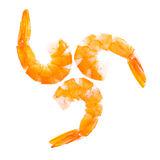 Read More
Read MoreWhiteleg shrimp (Litopenaeus vannamei, formerly Penaeus vannamei), also known as Pacific white shrimp, is a variety of prawn of the eastern Pacific Ocean commonly caught or farmed for food. During the 20th century, L. vannamei was an important species for Mexican inshore fishermen, as well as for trawlers further offshore. In the late 20th century, the wild fishery was overtaken by the use of aquaculture; this began in 1973 in Florida using prawns captured in Panama. In Latin America, the culture of L. vannamei showed peaks of production during the warm El Niño years, and reduced production during the cooler La Niña years, due to the effects of disease. Production of L. vannamei is limited by its susceptibility to various diseases, including white spot syndrome, Taura syndrome, infectious hypodermal and haematopoietic necrosis, baculoviral midgut gland necrosis and Vibrio infections. By 2004, global production of L. vannamei approached 1,116,000 t, and exceeded that of Penaeus monodon.
-
Vannamei prawn tails peeled cooked with fin 26/30 IQF
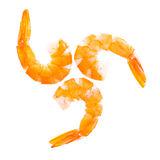 Read More
Read MoreWhiteleg shrimp (Litopenaeus vannamei, formerly Penaeus vannamei), also known as Pacific white shrimp, is a variety of prawn of the eastern Pacific Ocean commonly caught or farmed for food. During the 20th century, L. vannamei was an important species for Mexican inshore fishermen, as well as for trawlers further offshore. In the late 20th century, the wild fishery was overtaken by the use of aquaculture; this began in 1973 in Florida using prawns captured in Panama. In Latin America, the culture of L. vannamei showed peaks of production during the warm El Niño years, and reduced production during the cooler La Niña years, due to the effects of disease. Production of L. vannamei is limited by its susceptibility to various diseases, including white spot syndrome, Taura syndrome, infectious hypodermal and haematopoietic necrosis, baculoviral midgut gland necrosis and Vibrio infections. By 2004, global production of L. vannamei approached 1,116,000 t, and exceeded that of Penaeus monodon.
-
Vannamei prawn tails peeled cooked with fin 26/30 IQF
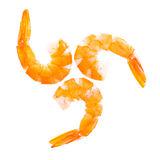 Read More
Read MoreWhiteleg shrimp (Litopenaeus vannamei, formerly Penaeus vannamei), also known as Pacific white shrimp, is a variety of prawn of the eastern Pacific Ocean commonly caught or farmed for food. During the 20th century, L. vannamei was an important species for Mexican inshore fishermen, as well as for trawlers further offshore. In the late 20th century, the wild fishery was overtaken by the use of aquaculture; this began in 1973 in Florida using prawns captured in Panama. In Latin America, the culture of L. vannamei showed peaks of production during the warm El Niño years, and reduced production during the cooler La Niña years, due to the effects of disease. Production of L. vannamei is limited by its susceptibility to various diseases, including white spot syndrome, Taura syndrome, infectious hypodermal and haematopoietic necrosis, baculoviral midgut gland necrosis and Vibrio infections. By 2004, global production of L. vannamei approached 1,116,000 t, and exceeded that of Penaeus monodon.
-
Vannamei prawn tails peeled cooked with fin 31/40 IQF
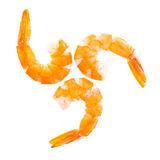 Read More
Read MoreWhiteleg shrimp (Litopenaeus vannamei, formerly Penaeus vannamei), also known as Pacific white shrimp, is a variety of prawn of the eastern Pacific Ocean commonly caught or farmed for food. During the 20th century, L. vannamei was an important species for Mexican inshore fishermen, as well as for trawlers further offshore. In the late 20th century, the wild fishery was overtaken by the use of aquaculture; this began in 1973 in Florida using prawns captured in Panama. In Latin America, the culture of L. vannamei showed peaks of production during the warm El Niño years, and reduced production during the cooler La Niña years, due to the effects of disease. Production of L. vannamei is limited by its susceptibility to various diseases, including white spot syndrome, Taura syndrome, infectious hypodermal and haematopoietic necrosis, baculoviral midgut gland necrosis and Vibrio infections. By 2004, global production of L. vannamei approached 1,116,000 t, and exceeded that of Penaeus monodon.
-
Vannamei prawn tails peeled raw without fins 13/15 IQF
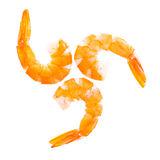 Read More
Read MoreWhiteleg shrimp (Litopenaeus vannamei, formerly Penaeus vannamei), also known as Pacific white shrimp, is a variety of prawn of the eastern Pacific Ocean commonly caught or farmed for food. During the 20th century, L. vannamei was an important species for Mexican inshore fishermen, as well as for trawlers further offshore. In the late 20th century, the wild fishery was overtaken by the use of aquaculture; this began in 1973 in Florida using prawns captured in Panama. In Latin America, the culture of L. vannamei showed peaks of production during the warm El Niño years, and reduced production during the cooler La Niña years, due to the effects of disease. Production of L. vannamei is limited by its susceptibility to various diseases, including white spot syndrome, Taura syndrome, infectious hypodermal and haematopoietic necrosis, baculoviral midgut gland necrosis and Vibrio infections. By 2004, global production of L. vannamei approached 1,116,000 t, and exceeded that of Penaeus monodon.
-
Vannamei prawn tails peeled raw without fins 16/20 IQF
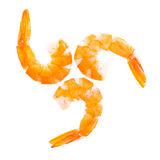 Read More
Read MoreWhiteleg shrimp (Litopenaeus vannamei, formerly Penaeus vannamei), also known as Pacific white shrimp, is a variety of prawn of the eastern Pacific Ocean commonly caught or farmed for food. During the 20th century, L. vannamei was an important species for Mexican inshore fishermen, as well as for trawlers further offshore. In the late 20th century, the wild fishery was overtaken by the use of aquaculture; this began in 1973 in Florida using prawns captured in Panama. In Latin America, the culture of L. vannamei showed peaks of production during the warm El Niño years, and reduced production during the cooler La Niña years, due to the effects of disease. Production of L. vannamei is limited by its susceptibility to various diseases, including white spot syndrome, Taura syndrome, infectious hypodermal and haematopoietic necrosis, baculoviral midgut gland necrosis and Vibrio infections. By 2004, global production of L. vannamei approached 1,116,000 t, and exceeded that of Penaeus monodon.
-
Vannamei prawn tails peeled raw 21/25 IQF
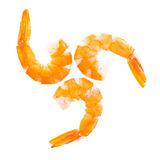 Read More
Read MoreWhiteleg shrimp (Litopenaeus vannamei, formerly Penaeus vannamei), also known as Pacific white shrimp, is a variety of prawn of the eastern Pacific Ocean commonly caught or farmed for food. During the 20th century, L. vannamei was an important species for Mexican inshore fishermen, as well as for trawlers further offshore. In the late 20th century, the wild fishery was overtaken by the use of aquaculture; this began in 1973 in Florida using prawns captured in Panama. In Latin America, the culture of L. vannamei showed peaks of production during the warm El Niño years, and reduced production during the cooler La Niña years, due to the effects of disease. Production of L. vannamei is limited by its susceptibility to various diseases, including white spot syndrome, Taura syndrome, infectious hypodermal and haematopoietic necrosis, baculoviral midgut gland necrosis and Vibrio infections. By 2004, global production of L. vannamei approached 1,116,000 t, and exceeded that of Penaeus monodon.
-
Vannamei prawn tails peeled raw 26/30 IQF
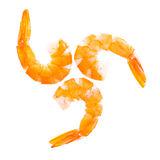 Read More
Read MoreWhiteleg shrimp (Litopenaeus vannamei, formerly Penaeus vannamei), also known as Pacific white shrimp, is a variety of prawn of the eastern Pacific Ocean commonly caught or farmed for food. During the 20th century, L. vannamei was an important species for Mexican inshore fishermen, as well as for trawlers further offshore. In the late 20th century, the wild fishery was overtaken by the use of aquaculture; this began in 1973 in Florida using prawns captured in Panama. In Latin America, the culture of L. vannamei showed peaks of production during the warm El Niño years, and reduced production during the cooler La Niña years, due to the effects of disease. Production of L. vannamei is limited by its susceptibility to various diseases, including white spot syndrome, Taura syndrome, infectious hypodermal and haematopoietic necrosis, baculoviral midgut gland necrosis and Vibrio infections. By 2004, global production of L. vannamei approached 1,116,000 t, and exceeded that of Penaeus monodon.
-
Vannamei prawn tails peeled raw 31/40 IQF
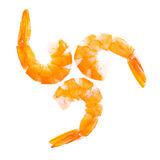 Read More
Read MoreWhiteleg shrimp (Litopenaeus vannamei, formerly Penaeus vannamei), also known as Pacific white shrimp, is a variety of prawn of the eastern Pacific Ocean commonly caught or farmed for food. During the 20th century, L. vannamei was an important species for Mexican inshore fishermen, as well as for trawlers further offshore. In the late 20th century, the wild fishery was overtaken by the use of aquaculture; this began in 1973 in Florida using prawns captured in Panama. In Latin America, the culture of L. vannamei showed peaks of production during the warm El Niño years, and reduced production during the cooler La Niña years, due to the effects of disease. Production of L. vannamei is limited by its susceptibility to various diseases, including white spot syndrome, Taura syndrome, infectious hypodermal and haematopoietic necrosis, baculoviral midgut gland necrosis and Vibrio infections. By 2004, global production of L. vannamei approached 1,116,000 t, and exceeded that of Penaeus monodon.
-
Vannamei prawn tails peeled raw 61/70 IQF glaze 25%
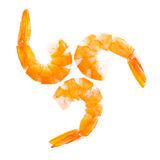 Read More
Read MoreWhiteleg shrimp (Litopenaeus vannamei, formerly Penaeus vannamei), also known as Pacific white shrimp, is a variety of prawn of the eastern Pacific Ocean commonly caught or farmed for food. During the 20th century, L. vannamei was an important species for Mexican inshore fishermen, as well as for trawlers further offshore. In the late 20th century, the wild fishery was overtaken by the use of aquaculture; this began in 1973 in Florida using prawns captured in Panama. In Latin America, the culture of L. vannamei showed peaks of production during the warm El Niño years, and reduced production during the cooler La Niña years, due to the effects of disease. Production of L. vannamei is limited by its susceptibility to various diseases, including white spot syndrome, Taura syndrome, infectious hypodermal and haematopoietic necrosis, baculoviral midgut gland necrosis and Vibrio infections. By 2004, global production of L. vannamei approached 1,116,000 t, and exceeded that of Penaeus monodon.
-
Vannamei prawn tails peeled raw 71/90 IQF
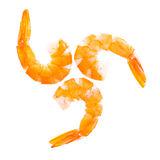 Read More
Read MoreWhiteleg shrimp (Litopenaeus vannamei, formerly Penaeus vannamei), also known as Pacific white shrimp, is a variety of prawn of the eastern Pacific Ocean commonly caught or farmed for food. During the 20th century, L. vannamei was an important species for Mexican inshore fishermen, as well as for trawlers further offshore. In the late 20th century, the wild fishery was overtaken by the use of aquaculture; this began in 1973 in Florida using prawns captured in Panama. In Latin America, the culture of L. vannamei showed peaks of production during the warm El Niño years, and reduced production during the cooler La Niña years, due to the effects of disease. Production of L. vannamei is limited by its susceptibility to various diseases, including white spot syndrome, Taura syndrome, infectious hypodermal and haematopoietic necrosis, baculoviral midgut gland necrosis and Vibrio infections. By 2004, global production of L. vannamei approached 1,116,000 t, and exceeded that of Penaeus monodon.
-
Vannamei prawn tails peeled raw 8/12 IQF
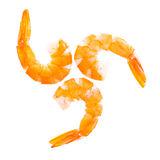 Read More
Read MoreWhiteleg shrimp (Litopenaeus vannamei, formerly Penaeus vannamei), also known as Pacific white shrimp, is a variety of prawn of the eastern Pacific Ocean commonly caught or farmed for food. During the 20th century, L. vannamei was an important species for Mexican inshore fishermen, as well as for trawlers further offshore. In the late 20th century, the wild fishery was overtaken by the use of aquaculture; this began in 1973 in Florida using prawns captured in Panama. In Latin America, the culture of L. vannamei showed peaks of production during the warm El Niño years, and reduced production during the cooler La Niña years, due to the effects of disease. Production of L. vannamei is limited by its susceptibility to various diseases, including white spot syndrome, Taura syndrome, infectious hypodermal and haematopoietic necrosis, baculoviral midgut gland necrosis and Vibrio infections. By 2004, global production of L. vannamei approached 1,116,000 t, and exceeded that of Penaeus monodon.
-
Vannamei prawn tails peeled raw with fins 21/25 IQF
 Read More
Read MoreWhiteleg shrimp (Litopenaeus vannamei, formerly Penaeus vannamei), also known as Pacific white shrimp, is a variety of prawn of the eastern Pacific Ocean commonly caught or farmed for food. During the 20th century, L. vannamei was an important species for Mexican inshore fishermen, as well as for trawlers further offshore. In the late 20th century, the wild fishery was overtaken by the use of aquaculture; this began in 1973 in Florida using prawns captured in Panama. In Latin America, the culture of L. vannamei showed peaks of production during the warm El Niño years, and reduced production during the cooler La Niña years, due to the effects of disease. Production of L. vannamei is limited by its susceptibility to various diseases, including white spot syndrome, Taura syndrome, infectious hypodermal and haematopoietic necrosis, baculoviral midgut gland necrosis and Vibrio infections. By 2004, global production of L. vannamei approached 1,116,000 t, and exceeded that of Penaeus monodon.
-
Vannamei prawn tails peeled raw with fins 26/30 IQF
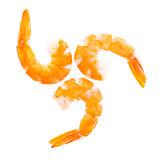 Read More
Read MoreWhiteleg shrimp (Litopenaeus vannamei, formerly Penaeus vannamei), also known as Pacific white shrimp, is a variety of prawn of the eastern Pacific Ocean commonly caught or farmed for food. During the 20th century, L. vannamei was an important species for Mexican inshore fishermen, as well as for trawlers further offshore. In the late 20th century, the wild fishery was overtaken by the use of aquaculture; this began in 1973 in Florida using prawns captured in Panama. In Latin America, the culture of L. vannamei showed peaks of production during the warm El Niño years, and reduced production during the cooler La Niña years, due to the effects of disease. Production of L. vannamei is limited by its susceptibility to various diseases, including white spot syndrome, Taura syndrome, infectious hypodermal and haematopoietic necrosis, baculoviral midgut gland necrosis and Vibrio infections. By 2004, global production of L. vannamei approached 1,116,000 t, and exceeded that of Penaeus monodon.
-
Vannamei prawn tails peeled raw with fins 31/40 IQF
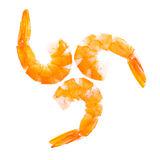 Read More
Read MoreWhiteleg shrimp (Litopenaeus vannamei, formerly Penaeus vannamei), also known as Pacific white shrimp, is a variety of prawn of the eastern Pacific Ocean commonly caught or farmed for food. During the 20th century, L. vannamei was an important species for Mexican inshore fishermen, as well as for trawlers further offshore. In the late 20th century, the wild fishery was overtaken by the use of aquaculture; this began in 1973 in Florida using prawns captured in Panama. In Latin America, the culture of L. vannamei showed peaks of production during the warm El Niño years, and reduced production during the cooler La Niña years, due to the effects of disease. Production of L. vannamei is limited by its susceptibility to various diseases, including white spot syndrome, Taura syndrome, infectious hypodermal and haematopoietic necrosis, baculoviral midgut gland necrosis and Vibrio infections. By 2004, global production of L. vannamei approached 1,116,000 t, and exceeded that of Penaeus monodon.
-
Vannamei prawn tails peeled raw without fins 51/60 IQF
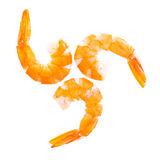 Read More
Read MoreWhiteleg shrimp (Litopenaeus vannamei, formerly Penaeus vannamei), also known as Pacific white shrimp, is a variety of prawn of the eastern Pacific Ocean commonly caught or farmed for food. During the 20th century, L. vannamei was an important species for Mexican inshore fishermen, as well as for trawlers further offshore. In the late 20th century, the wild fishery was overtaken by the use of aquaculture; this began in 1973 in Florida using prawns captured in Panama. In Latin America, the culture of L. vannamei showed peaks of production during the warm El Niño years, and reduced production during the cooler La Niña years, due to the effects of disease. Production of L. vannamei is limited by its susceptibility to various diseases, including white spot syndrome, Taura syndrome, infectious hypodermal and haematopoietic necrosis, baculoviral midgut gland necrosis and Vibrio infections. By 2004, global production of L. vannamei approached 1,116,000 t, and exceeded that of Penaeus monodon.
-
Vannamei Shrimp tails cooked in the shell 16/20 IQF
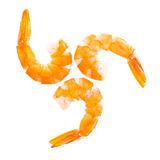 Read More
Read MoreWhiteleg shrimp (Litopenaeus vannamei, formerly Penaeus vannamei), also known as Pacific white shrimp, is a variety of prawn of the eastern Pacific Ocean commonly caught or farmed for food. During the 20th century, L. vannamei was an important species for Mexican inshore fishermen, as well as for trawlers further offshore. In the late 20th century, the wild fishery was overtaken by the use of aquaculture; this began in 1973 in Florida using prawns captured in Panama. In Latin America, the culture of L. vannamei showed peaks of production during the warm El Niño years, and reduced production during the cooler La Niña years, due to the effects of disease. Production of L. vannamei is limited by its susceptibility to various diseases, including white spot syndrome, Taura syndrome, infectious hypodermal and haematopoietic necrosis, baculoviral midgut gland necrosis and Vibrio infections. By 2004, global production of L. vannamei approached 1,116,000 t, and exceeded that of Penaeus monodon.
-
Vannamei Shrimp tails cooked in the shell 21/25 IQF
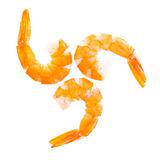 Read More
Read MoreWhiteleg shrimp (Litopenaeus vannamei, formerly Penaeus vannamei), also known as Pacific white shrimp, is a variety of prawn of the eastern Pacific Ocean commonly caught or farmed for food. During the 20th century, L. vannamei was an important species for Mexican inshore fishermen, as well as for trawlers further offshore. In the late 20th century, the wild fishery was overtaken by the use of aquaculture; this began in 1973 in Florida using prawns captured in Panama. In Latin America, the culture of L. vannamei showed peaks of production during the warm El Niño years, and reduced production during the cooler La Niña years, due to the effects of disease. Production of L. vannamei is limited by its susceptibility to various diseases, including white spot syndrome, Taura syndrome, infectious hypodermal and haematopoietic necrosis, baculoviral midgut gland necrosis and Vibrio infections. By 2004, global production of L. vannamei approached 1,116,000 t, and exceeded that of Penaeus monodon.
-
Vannamei Shrimp tails cooked in the shell IQF 26/30
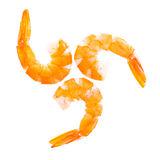 Read More
Read MoreWhiteleg shrimp (Litopenaeus vannamei, formerly Penaeus vannamei), also known as Pacific white shrimp, is a variety of prawn of the eastern Pacific Ocean commonly caught or farmed for food. During the 20th century, L. vannamei was an important species for Mexican inshore fishermen, as well as for trawlers further offshore. In the late 20th century, the wild fishery was overtaken by the use of aquaculture; this began in 1973 in Florida using prawns captured in Panama. In Latin America, the culture of L. vannamei showed peaks of production during the warm El Niño years, and reduced production during the cooler La Niña years, due to the effects of disease. Production of L. vannamei is limited by its susceptibility to various diseases, including white spot syndrome, Taura syndrome, infectious hypodermal and haematopoietic necrosis, baculoviral midgut gland necrosis and Vibrio infections. By 2004, global production of L. vannamei approached 1,116,000 t, and exceeded that of Penaeus monodon.
-
Vannamei Shrimp tails cooked in the shell 31/40 IQF
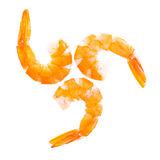 Read More
Read MoreWhiteleg shrimp (Litopenaeus vannamei, formerly Penaeus vannamei), also known as Pacific white shrimp, is a variety of prawn of the eastern Pacific Ocean commonly caught or farmed for food. During the 20th century, L. vannamei was an important species for Mexican inshore fishermen, as well as for trawlers further offshore. In the late 20th century, the wild fishery was overtaken by the use of aquaculture; this began in 1973 in Florida using prawns captured in Panama. In Latin America, the culture of L. vannamei showed peaks of production during the warm El Niño years, and reduced production during the cooler La Niña years, due to the effects of disease. Production of L. vannamei is limited by its susceptibility to various diseases, including white spot syndrome, Taura syndrome, infectious hypodermal and haematopoietic necrosis, baculoviral midgut gland necrosis and Vibrio infections. By 2004, global production of L. vannamei approached 1,116,000 t, and exceeded that of Penaeus monodon.
-
Vannamei Shrimp tails cooked in the shell 41/50 IQF glaze 30%
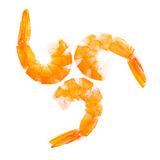 Read More
Read MoreWhiteleg shrimp (Litopenaeus vannamei, formerly Penaeus vannamei), also known as Pacific white shrimp, is a variety of prawn of the eastern Pacific Ocean commonly caught or farmed for food. During the 20th century, L. vannamei was an important species for Mexican inshore fishermen, as well as for trawlers further offshore. In the late 20th century, the wild fishery was overtaken by the use of aquaculture; this began in 1973 in Florida using prawns captured in Panama. In Latin America, the culture of L. vannamei showed peaks of production during the warm El Niño years, and reduced production during the cooler La Niña years, due to the effects of disease. Production of L. vannamei is limited by its susceptibility to various diseases, including white spot syndrome, Taura syndrome, infectious hypodermal and haematopoietic necrosis, baculoviral midgut gland necrosis and Vibrio infections. By 2004, global production of L. vannamei approached 1,116,000 t, and exceeded that of Penaeus monodon.
-
Vannamei Shrimp tails cooked in the shell 41/50 IQF glaze 5%
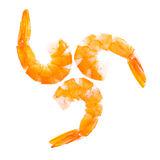 Read More
Read MoreWhiteleg shrimp (Litopenaeus vannamei, formerly Penaeus vannamei), also known as Pacific white shrimp, is a variety of prawn of the eastern Pacific Ocean commonly caught or farmed for food. During the 20th century, L. vannamei was an important species for Mexican inshore fishermen, as well as for trawlers further offshore. In the late 20th century, the wild fishery was overtaken by the use of aquaculture; this began in 1973 in Florida using prawns captured in Panama. In Latin America, the culture of L. vannamei showed peaks of production during the warm El Niño years, and reduced production during the cooler La Niña years, due to the effects of disease. Production of L. vannamei is limited by its susceptibility to various diseases, including white spot syndrome, Taura syndrome, infectious hypodermal and haematopoietic necrosis, baculoviral midgut gland necrosis and Vibrio infections. By 2004, global production of L. vannamei approached 1,116,000 t, and exceeded that of Penaeus monodon.
-
Vannamei Shrimp tails raw in the shell 31/35 IQF glaze 5%
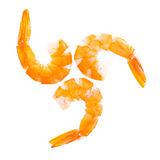 Read More
Read MoreWhiteleg shrimp (Litopenaeus vannamei, formerly Penaeus vannamei), also known as Pacific white shrimp, is a variety of prawn of the eastern Pacific Ocean commonly caught or farmed for food. During the 20th century, L. vannamei was an important species for Mexican inshore fishermen, as well as for trawlers further offshore. In the late 20th century, the wild fishery was overtaken by the use of aquaculture; this began in 1973 in Florida using prawns captured in Panama. In Latin America, the culture of L. vannamei showed peaks of production during the warm El Niño years, and reduced production during the cooler La Niña years, due to the effects of disease. Production of L. vannamei is limited by its susceptibility to various diseases, including white spot syndrome, Taura syndrome, infectious hypodermal and haematopoietic necrosis, baculoviral midgut gland necrosis and Vibrio infections. By 2004, global production of L. vannamei approached 1,116,000 t, and exceeded that of Penaeus monodon.
-
Vannamei Shrimp tails raw in the shell 36/40 IQF glaze 5%
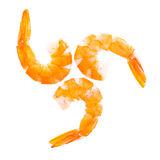 Read More
Read MoreWhiteleg shrimp (Litopenaeus vannamei, formerly Penaeus vannamei), also known as Pacific white shrimp, is a variety of prawn of the eastern Pacific Ocean commonly caught or farmed for food. During the 20th century, L. vannamei was an important species for Mexican inshore fishermen, as well as for trawlers further offshore. In the late 20th century, the wild fishery was overtaken by the use of aquaculture; this began in 1973 in Florida using prawns captured in Panama. In Latin America, the culture of L. vannamei showed peaks of production during the warm El Niño years, and reduced production during the cooler La Niña years, due to the effects of disease. Production of L. vannamei is limited by its susceptibility to various diseases, including white spot syndrome, Taura syndrome, infectious hypodermal and haematopoietic necrosis, baculoviral midgut gland necrosis and Vibrio infections. By 2004, global production of L. vannamei approached 1,116,000 t, and exceeded that of Penaeus monodon.
-
Vannamei Shrimp tails raw in the shell 16/20 BLOCK 1,8kg
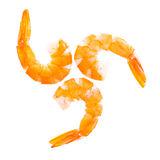 Read More
Read MoreWhiteleg shrimp (Litopenaeus vannamei, formerly Penaeus vannamei), also known as Pacific white shrimp, is a variety of prawn of the eastern Pacific Ocean commonly caught or farmed for food. During the 20th century, L. vannamei was an important species for Mexican inshore fishermen, as well as for trawlers further offshore. In the late 20th century, the wild fishery was overtaken by the use of aquaculture; this began in 1973 in Florida using prawns captured in Panama. In Latin America, the culture of L. vannamei showed peaks of production during the warm El Niño years, and reduced production during the cooler La Niña years, due to the effects of disease. Production of L. vannamei is limited by its susceptibility to various diseases, including white spot syndrome, Taura syndrome, infectious hypodermal and haematopoietic necrosis, baculoviral midgut gland necrosis and Vibrio infections. By 2004, global production of L. vannamei approached 1,116,000 t, and exceeded that of Penaeus monodon.
-
Vannamei Shrimp tails raw in the shell 16/20 IQF
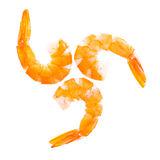 Read More
Read MoreWhiteleg shrimp (Litopenaeus vannamei, formerly Penaeus vannamei), also known as Pacific white shrimp, is a variety of prawn of the eastern Pacific Ocean commonly caught or farmed for food. During the 20th century, L. vannamei was an important species for Mexican inshore fishermen, as well as for trawlers further offshore. In the late 20th century, the wild fishery was overtaken by the use of aquaculture; this began in 1973 in Florida using prawns captured in Panama. In Latin America, the culture of L. vannamei showed peaks of production during the warm El Niño years, and reduced production during the cooler La Niña years, due to the effects of disease. Production of L. vannamei is limited by its susceptibility to various diseases, including white spot syndrome, Taura syndrome, infectious hypodermal and haematopoietic necrosis, baculoviral midgut gland necrosis and Vibrio infections. By 2004, global production of L. vannamei approached 1,116,000 t, and exceeded that of Penaeus monodon.
-
Vannamei Shrimp tails raw in the shell 21/25 IQF
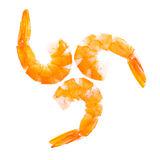 Read More
Read MoreWhiteleg shrimp (Litopenaeus vannamei, formerly Penaeus vannamei), also known as Pacific white shrimp, is a variety of prawn of the eastern Pacific Ocean commonly caught or farmed for food. During the 20th century, L. vannamei was an important species for Mexican inshore fishermen, as well as for trawlers further offshore. In the late 20th century, the wild fishery was overtaken by the use of aquaculture; this began in 1973 in Florida using prawns captured in Panama. In Latin America, the culture of L. vannamei showed peaks of production during the warm El Niño years, and reduced production during the cooler La Niña years, due to the effects of disease. Production of L. vannamei is limited by its susceptibility to various diseases, including white spot syndrome, Taura syndrome, infectious hypodermal and haematopoietic necrosis, baculoviral midgut gland necrosis and Vibrio infections. By 2004, global production of L. vannamei approached 1,116,000 t, and exceeded that of Penaeus monodon.
-
Vannamei Shrimp tails raw in the shell 26/30 IQF glaze 5%
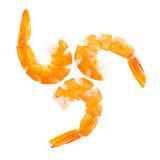 Read More
Read MoreWhiteleg shrimp (Litopenaeus vannamei, formerly Penaeus vannamei), also known as Pacific white shrimp, is a variety of prawn of the eastern Pacific Ocean commonly caught or farmed for food. During the 20th century, L. vannamei was an important species for Mexican inshore fishermen, as well as for trawlers further offshore. In the late 20th century, the wild fishery was overtaken by the use of aquaculture; this began in 1973 in Florida using prawns captured in Panama. In Latin America, the culture of L. vannamei showed peaks of production during the warm El Niño years, and reduced production during the cooler La Niña years, due to the effects of disease. Production of L. vannamei is limited by its susceptibility to various diseases, including white spot syndrome, Taura syndrome, infectious hypodermal and haematopoietic necrosis, baculoviral midgut gland necrosis and Vibrio infections. By 2004, global production of L. vannamei approached 1,116,000 t, and exceeded that of Penaeus monodon.
-
Vannamei Shrimp tails raw in the shell 31/40 IQF
 Read More
Read MoreWhiteleg shrimp (Litopenaeus vannamei, formerly Penaeus vannamei), also known as Pacific white shrimp, is a variety of prawn of the eastern Pacific Ocean commonly caught or farmed for food. During the 20th century, L. vannamei was an important species for Mexican inshore fishermen, as well as for trawlers further offshore. In the late 20th century, the wild fishery was overtaken by the use of aquaculture; this began in 1973 in Florida using prawns captured in Panama. In Latin America, the culture of L. vannamei showed peaks of production during the warm El Niño years, and reduced production during the cooler La Niña years, due to the effects of disease. Production of L. vannamei is limited by its susceptibility to various diseases, including white spot syndrome, Taura syndrome, infectious hypodermal and haematopoietic necrosis, baculoviral midgut gland necrosis and Vibrio infections. By 2004, global production of L. vannamei approached 1,116,000 t, and exceeded that of Penaeus monodon.
-
Vannamei Shrimp tails raw in the shell 41/50 IQF glaze 30%
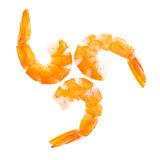 Read More
Read MoreWhiteleg shrimp (Litopenaeus vannamei, formerly Penaeus vannamei), also known as Pacific white shrimp, is a variety of prawn of the eastern Pacific Ocean commonly caught or farmed for food. During the 20th century, L. vannamei was an important species for Mexican inshore fishermen, as well as for trawlers further offshore. In the late 20th century, the wild fishery was overtaken by the use of aquaculture; this began in 1973 in Florida using prawns captured in Panama. In Latin America, the culture of L. vannamei showed peaks of production during the warm El Niño years, and reduced production during the cooler La Niña years, due to the effects of disease. Production of L. vannamei is limited by its susceptibility to various diseases, including white spot syndrome, Taura syndrome, infectious hypodermal and haematopoietic necrosis, baculoviral midgut gland necrosis and Vibrio infections. By 2004, global production of L. vannamei approached 1,116,000 t, and exceeded that of Penaeus monodon.
-
Vannamei Shrimp tails raw in the shell 41/50 IQF glaze 5%
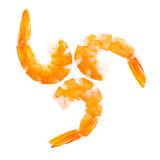 Read More
Read MoreWhiteleg shrimp (Litopenaeus vannamei, formerly Penaeus vannamei), also known as Pacific white shrimp, is a variety of prawn of the eastern Pacific Ocean commonly caught or farmed for food. During the 20th century, L. vannamei was an important species for Mexican inshore fishermen, as well as for trawlers further offshore. In the late 20th century, the wild fishery was overtaken by the use of aquaculture; this began in 1973 in Florida using prawns captured in Panama. In Latin America, the culture of L. vannamei showed peaks of production during the warm El Niño years, and reduced production during the cooler La Niña years, due to the effects of disease. Production of L. vannamei is limited by its susceptibility to various diseases, including white spot syndrome, Taura syndrome, infectious hypodermal and haematopoietic necrosis, baculoviral midgut gland necrosis and Vibrio infections. By 2004, global production of L. vannamei approached 1,116,000 t, and exceeded that of Penaeus monodon.
-
Vannamei Shrimp tails raw in the shell 51/60 IQF glaze 5%
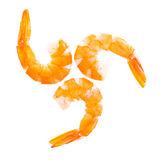 Read More
Read MoreWhiteleg shrimp (Litopenaeus vannamei, formerly Penaeus vannamei), also known as Pacific white shrimp, is a variety of prawn of the eastern Pacific Ocean commonly caught or farmed for food. During the 20th century, L. vannamei was an important species for Mexican inshore fishermen, as well as for trawlers further offshore. In the late 20th century, the wild fishery was overtaken by the use of aquaculture; this began in 1973 in Florida using prawns captured in Panama. In Latin America, the culture of L. vannamei showed peaks of production during the warm El Niño years, and reduced production during the cooler La Niña years, due to the effects of disease. Production of L. vannamei is limited by its susceptibility to various diseases, including white spot syndrome, Taura syndrome, infectious hypodermal and haematopoietic necrosis, baculoviral midgut gland necrosis and Vibrio infections. By 2004, global production of L. vannamei approached 1,116,000 t, and exceeded that of Penaeus monodon.
-
Vannamei Shrimp tails raw in the shell 61/70 IQF glaze 5%
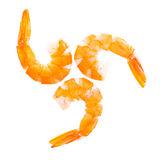 Read More
Read MoreWhiteleg shrimp (Litopenaeus vannamei, formerly Penaeus vannamei), also known as Pacific white shrimp, is a variety of prawn of the eastern Pacific Ocean commonly caught or farmed for food. During the 20th century, L. vannamei was an important species for Mexican inshore fishermen, as well as for trawlers further offshore. In the late 20th century, the wild fishery was overtaken by the use of aquaculture; this began in 1973 in Florida using prawns captured in Panama. In Latin America, the culture of L. vannamei showed peaks of production during the warm El Niño years, and reduced production during the cooler La Niña years, due to the effects of disease. Production of L. vannamei is limited by its susceptibility to various diseases, including white spot syndrome, Taura syndrome, infectious hypodermal and haematopoietic necrosis, baculoviral midgut gland necrosis and Vibrio infections. By 2004, global production of L. vannamei approached 1,116,000 t, and exceeded that of Penaeus monodon.
-
Vannamei Shrimp tails raw in the shell 8/12 IQF
 Read More
Read MoreWhiteleg shrimp (Litopenaeus vannamei, formerly Penaeus vannamei), also known as Pacific white shrimp, is a variety of prawn of the eastern Pacific Ocean commonly caught or farmed for food. During the 20th century, L. vannamei was an important species for Mexican inshore fishermen, as well as for trawlers further offshore. In the late 20th century, the wild fishery was overtaken by the use of aquaculture; this began in 1973 in Florida using prawns captured in Panama. In Latin America, the culture of L. vannamei showed peaks of production during the warm El Niño years, and reduced production during the cooler La Niña years, due to the effects of disease. Production of L. vannamei is limited by its susceptibility to various diseases, including white spot syndrome, Taura syndrome, infectious hypodermal and haematopoietic necrosis, baculoviral midgut gland necrosis and Vibrio infections. By 2004, global production of L. vannamei approached 1,116,000 t, and exceeded that of Penaeus monodon.
-
Black Tiger prawn tails peeled cooked without fins 8/12 IQF
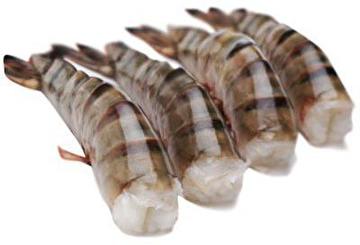 Read More
Read More -
Black Tiger prawn tails peeled cooked with fin 26/30 IQF
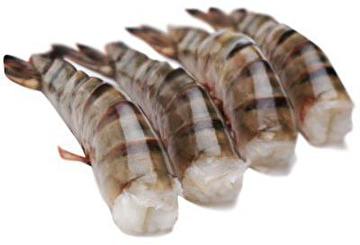 Read More
Read More -
Vannamei prawn tails peeled raw 41/50 IQF
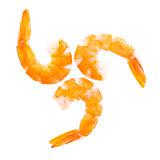 Read More
Read More -
Vannamei Shrimp tails raw in the shell 71/90 IQF glaze 5%
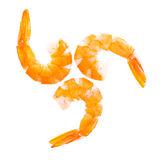 Read More
Read More -
Vannamei prawn whole raw 26/30 IQF
Read More
